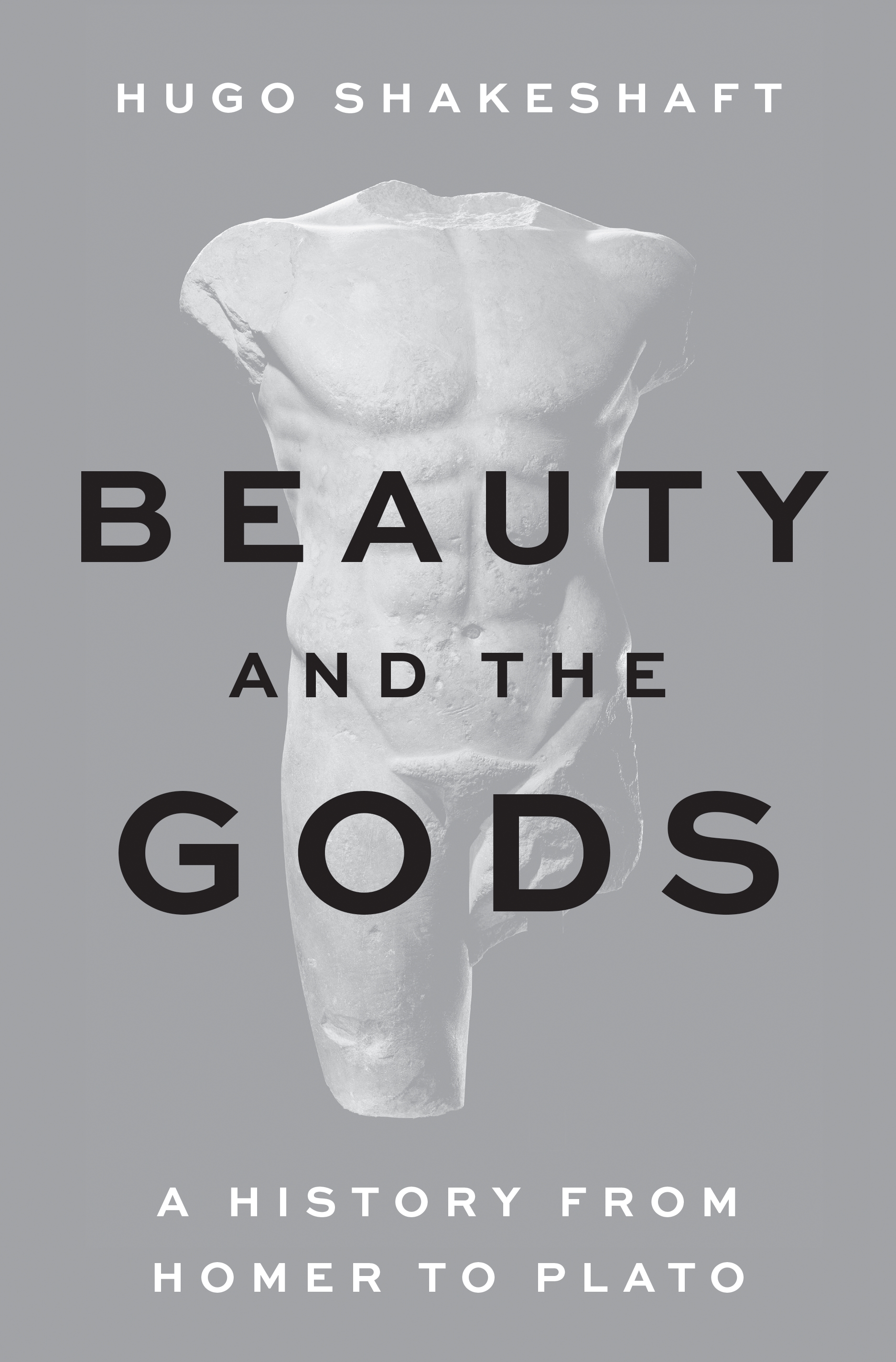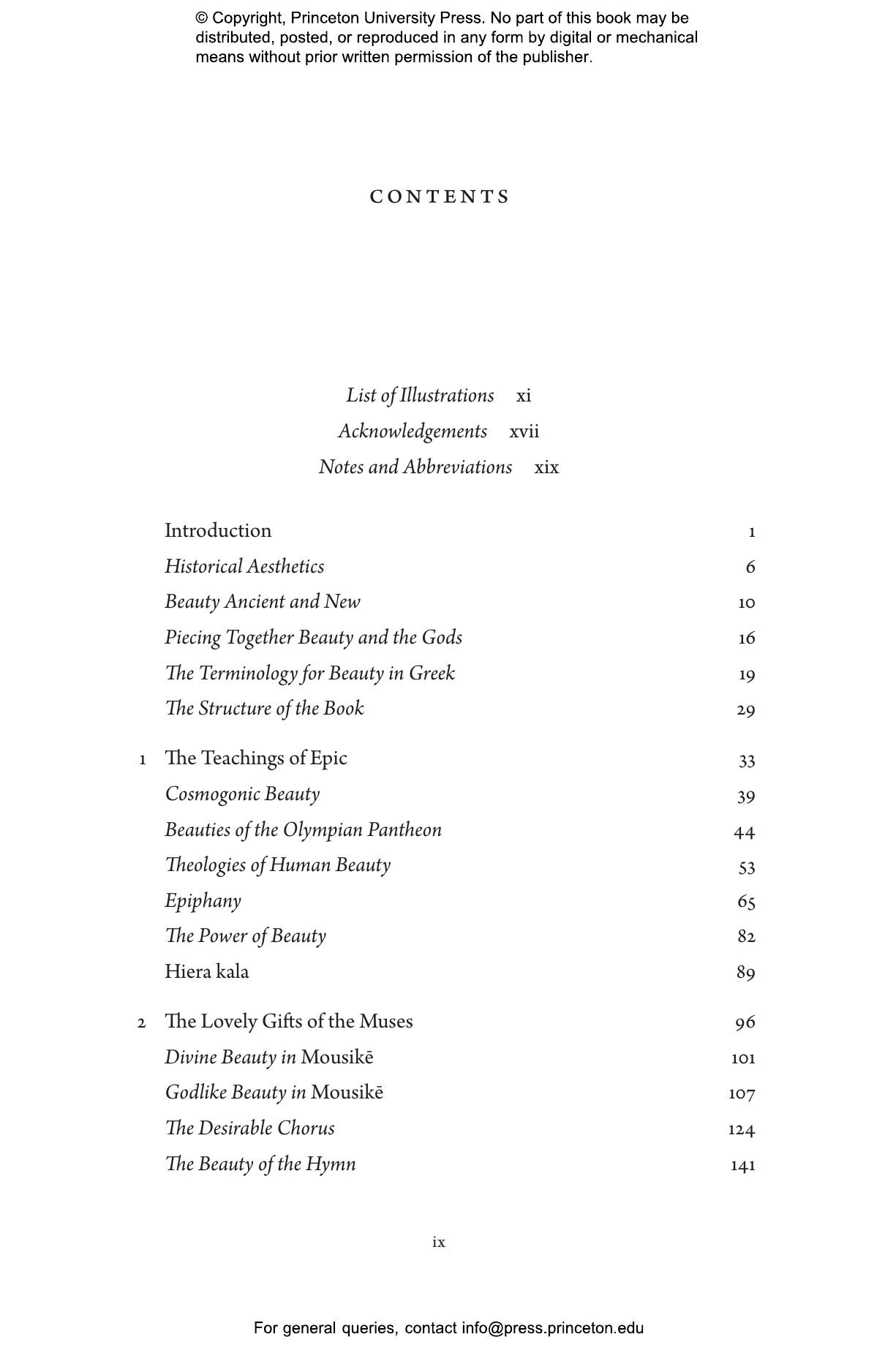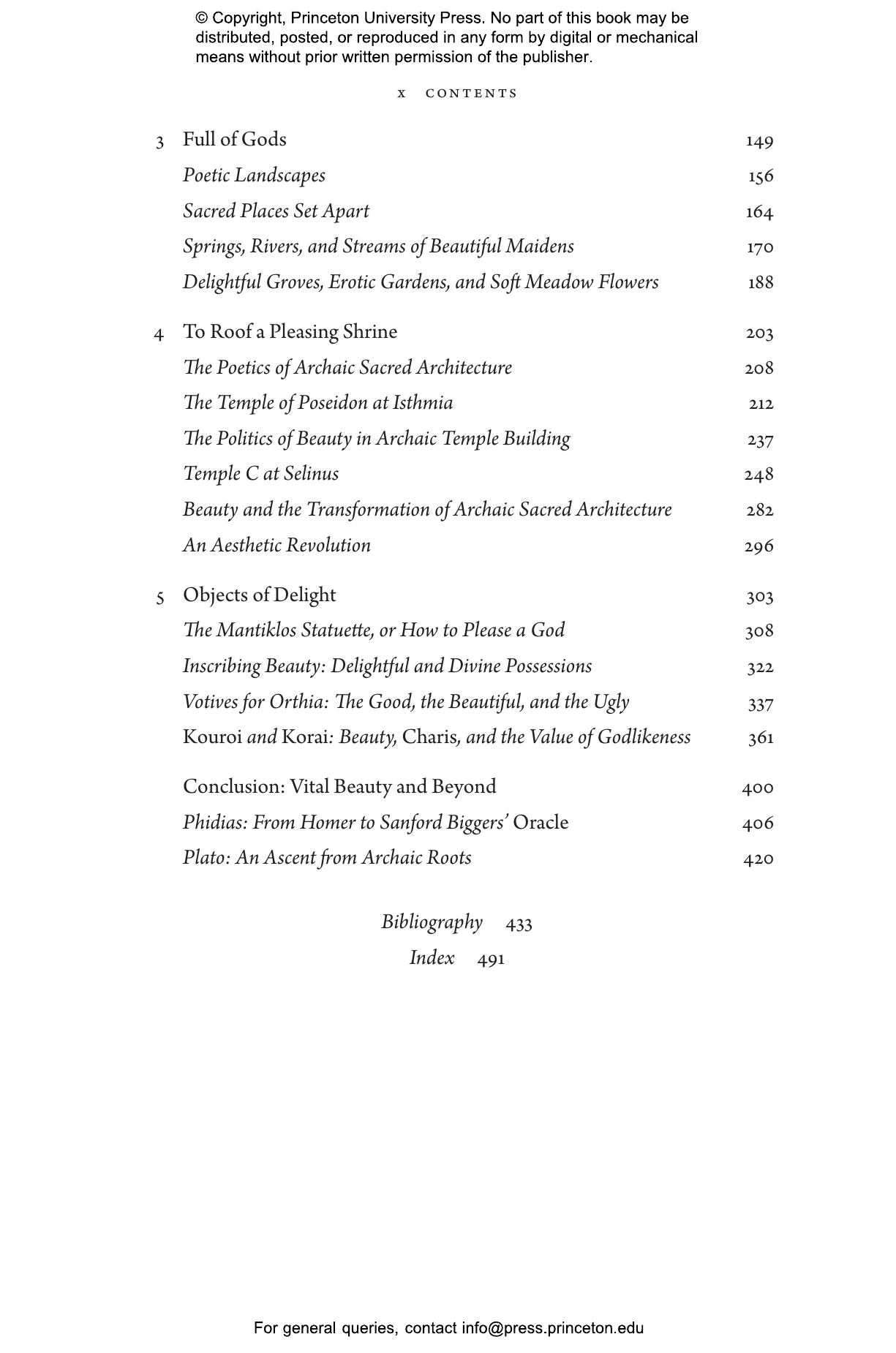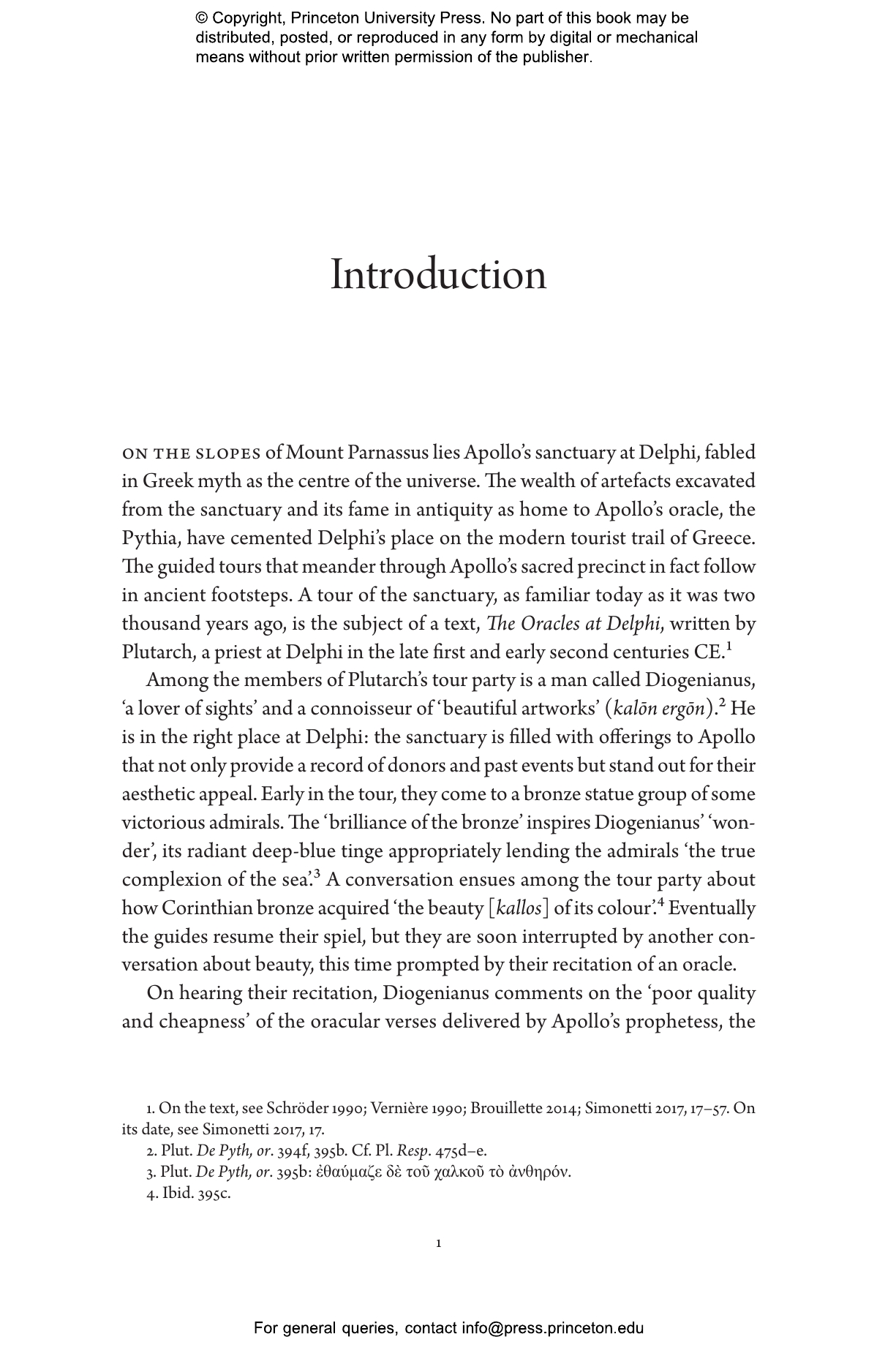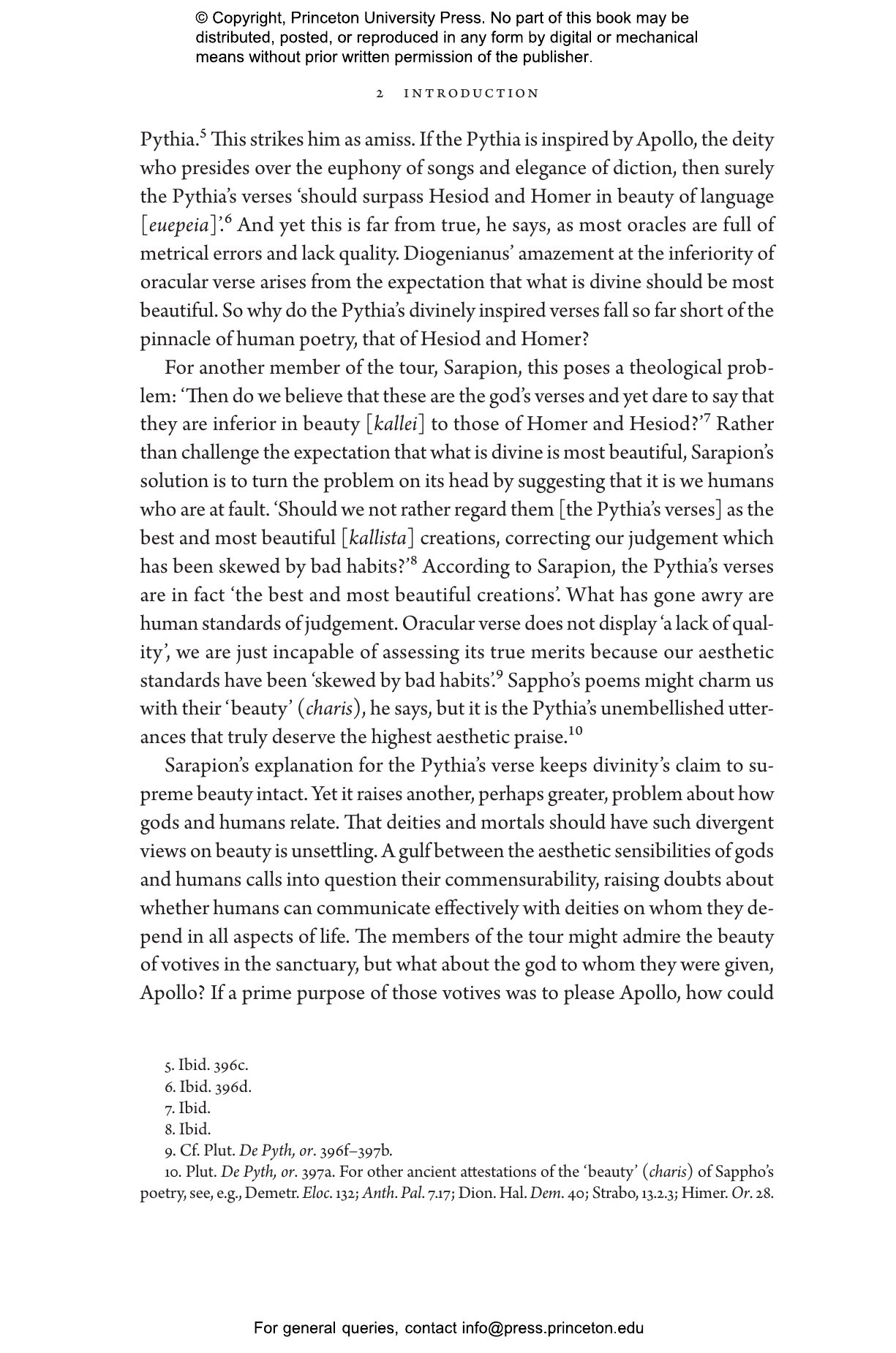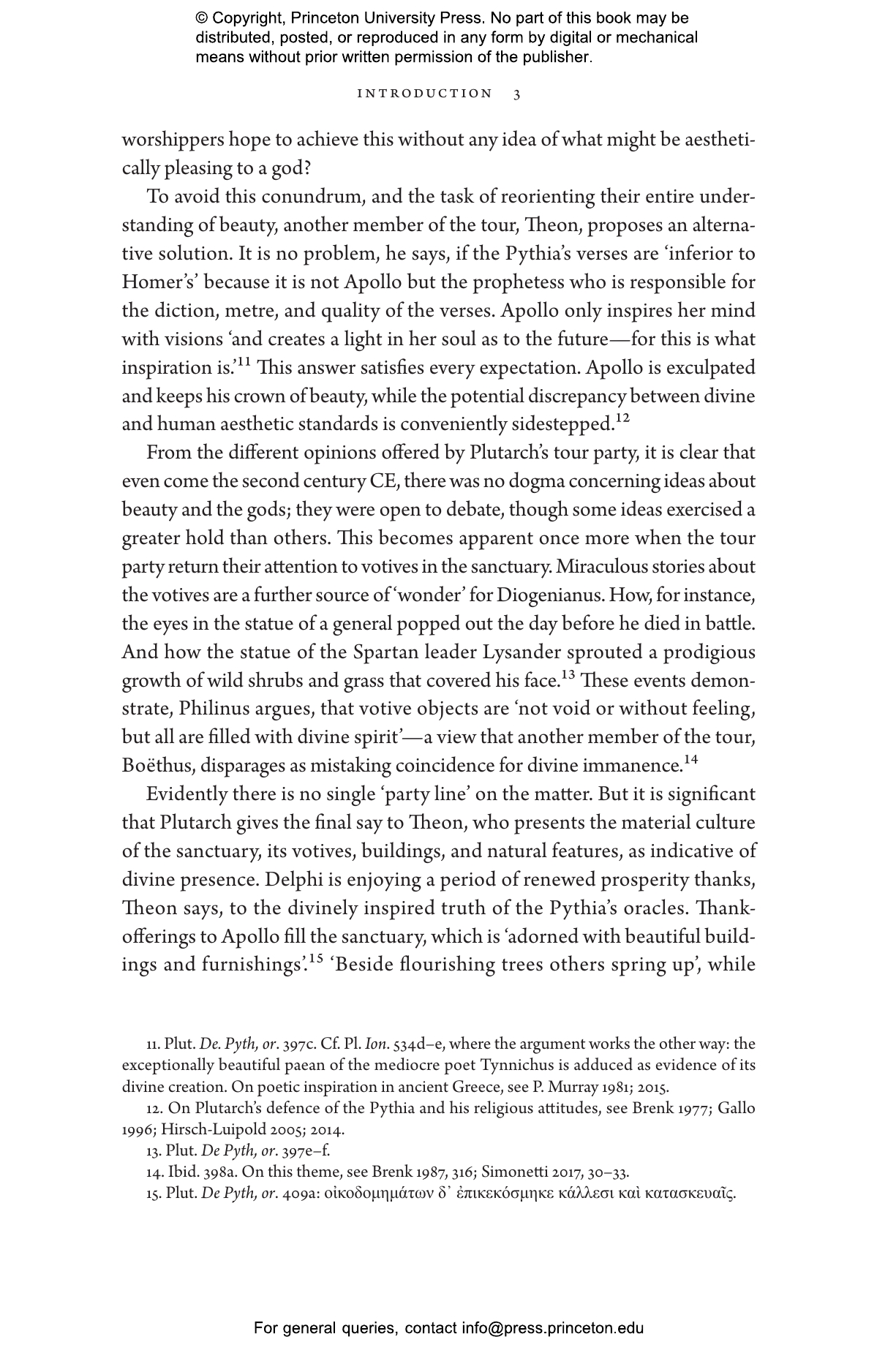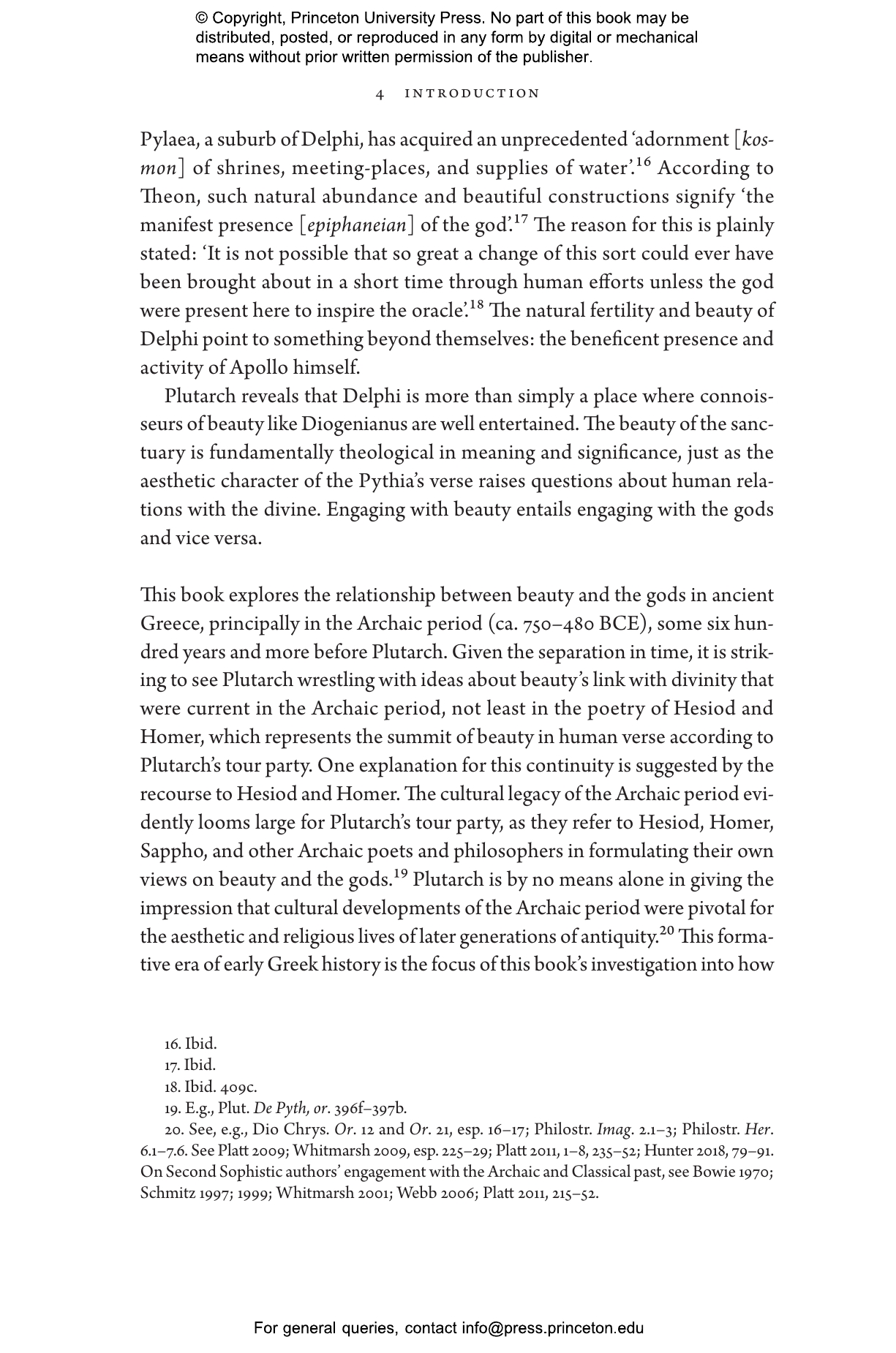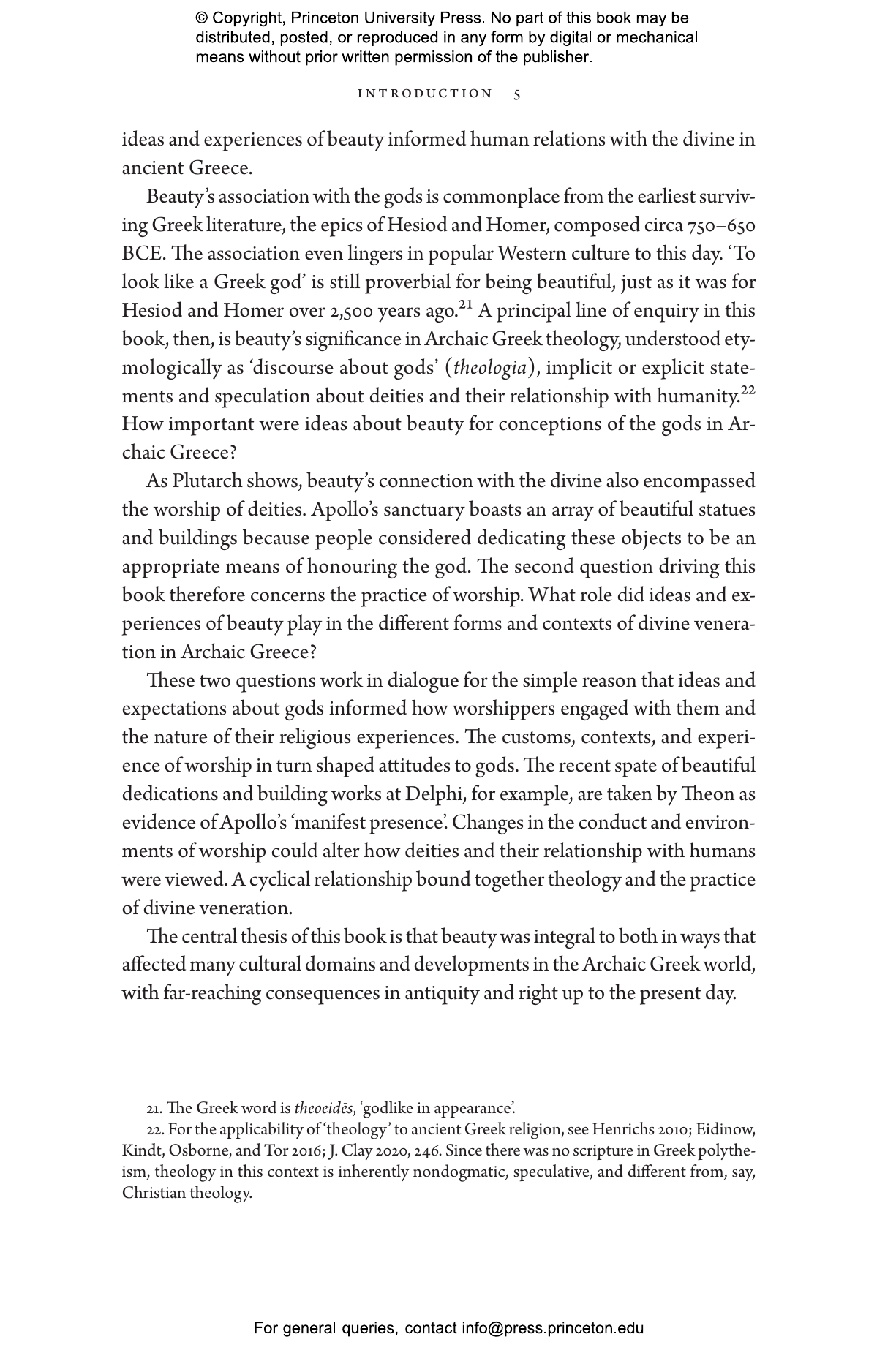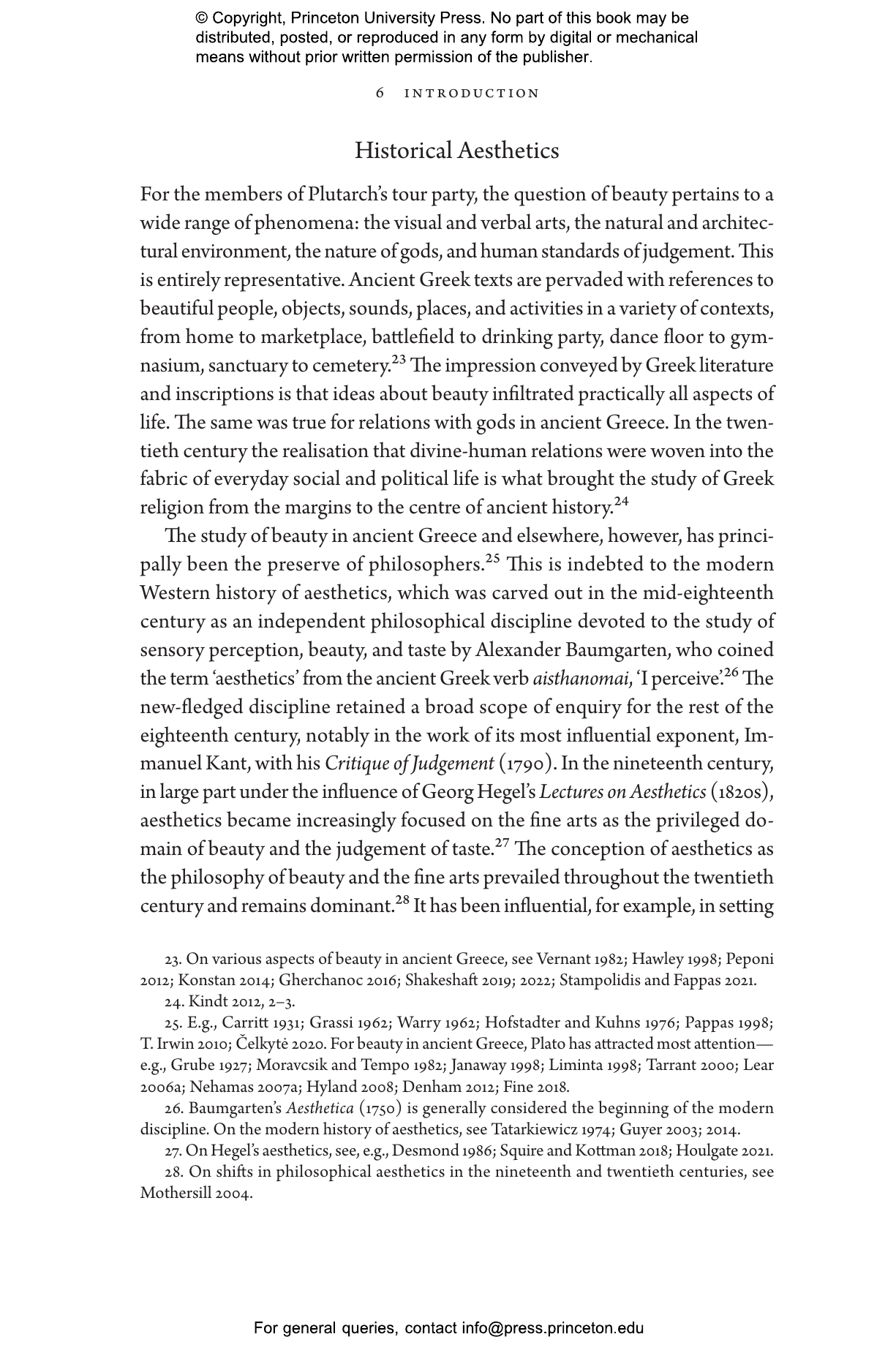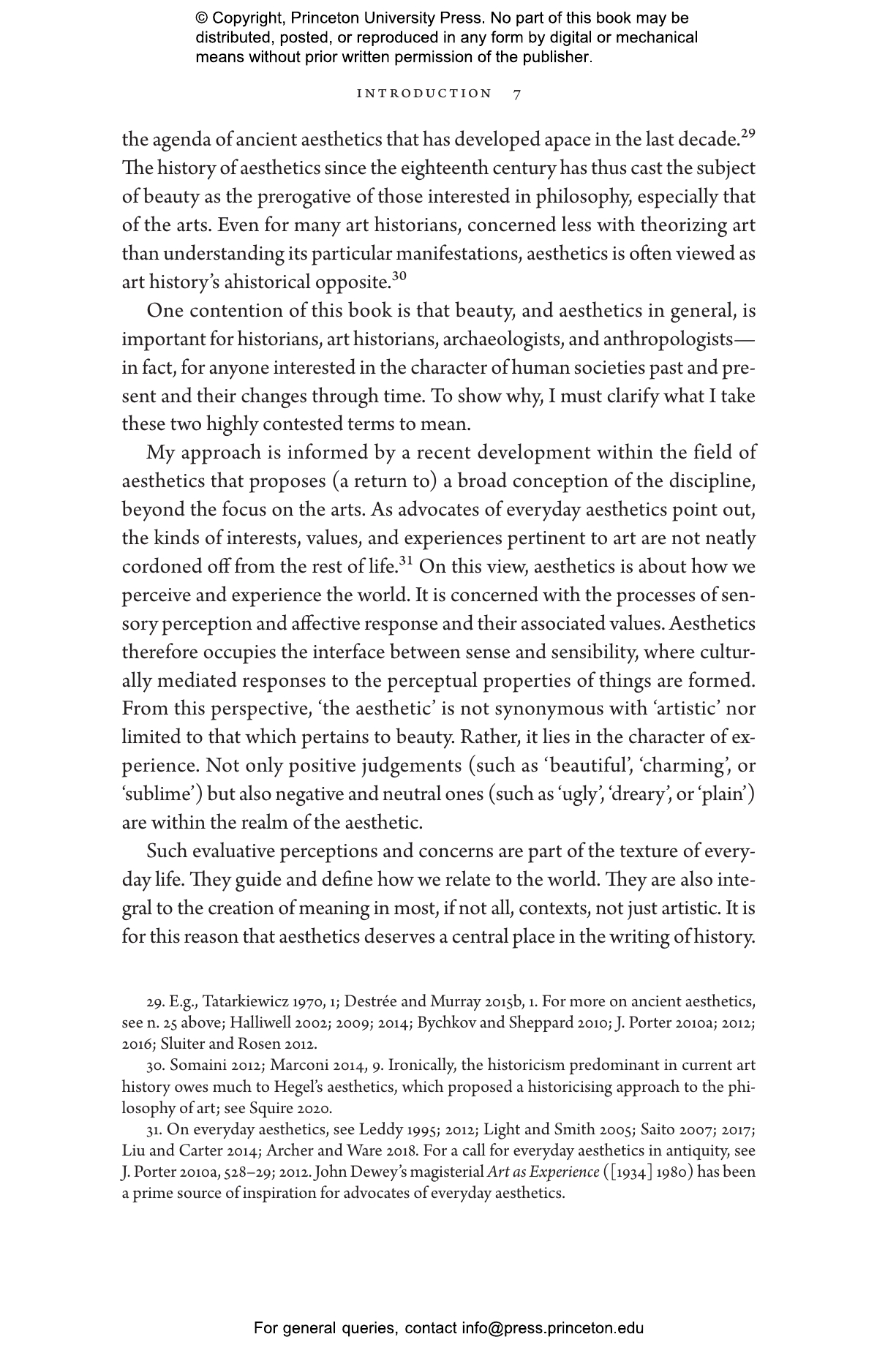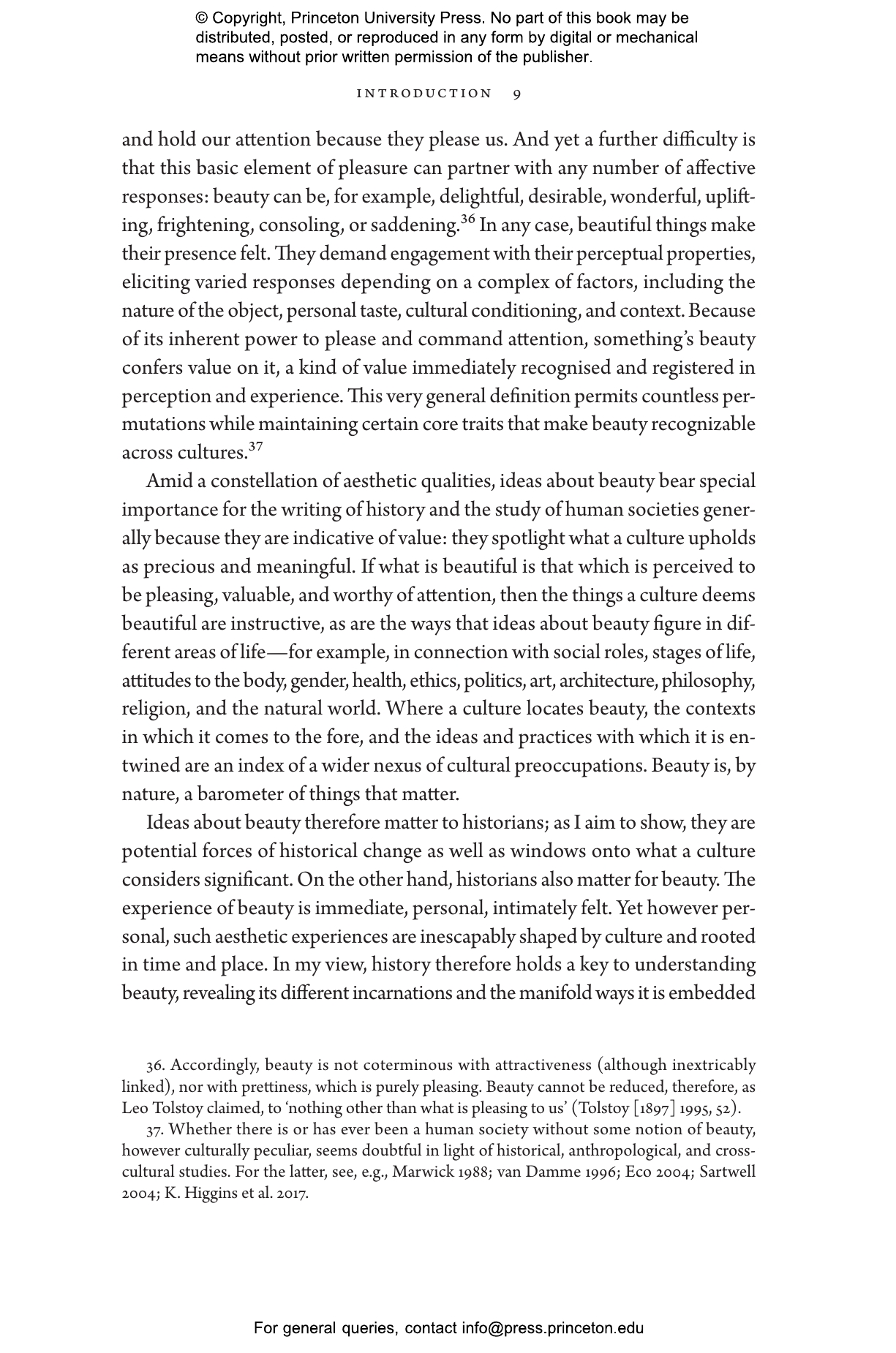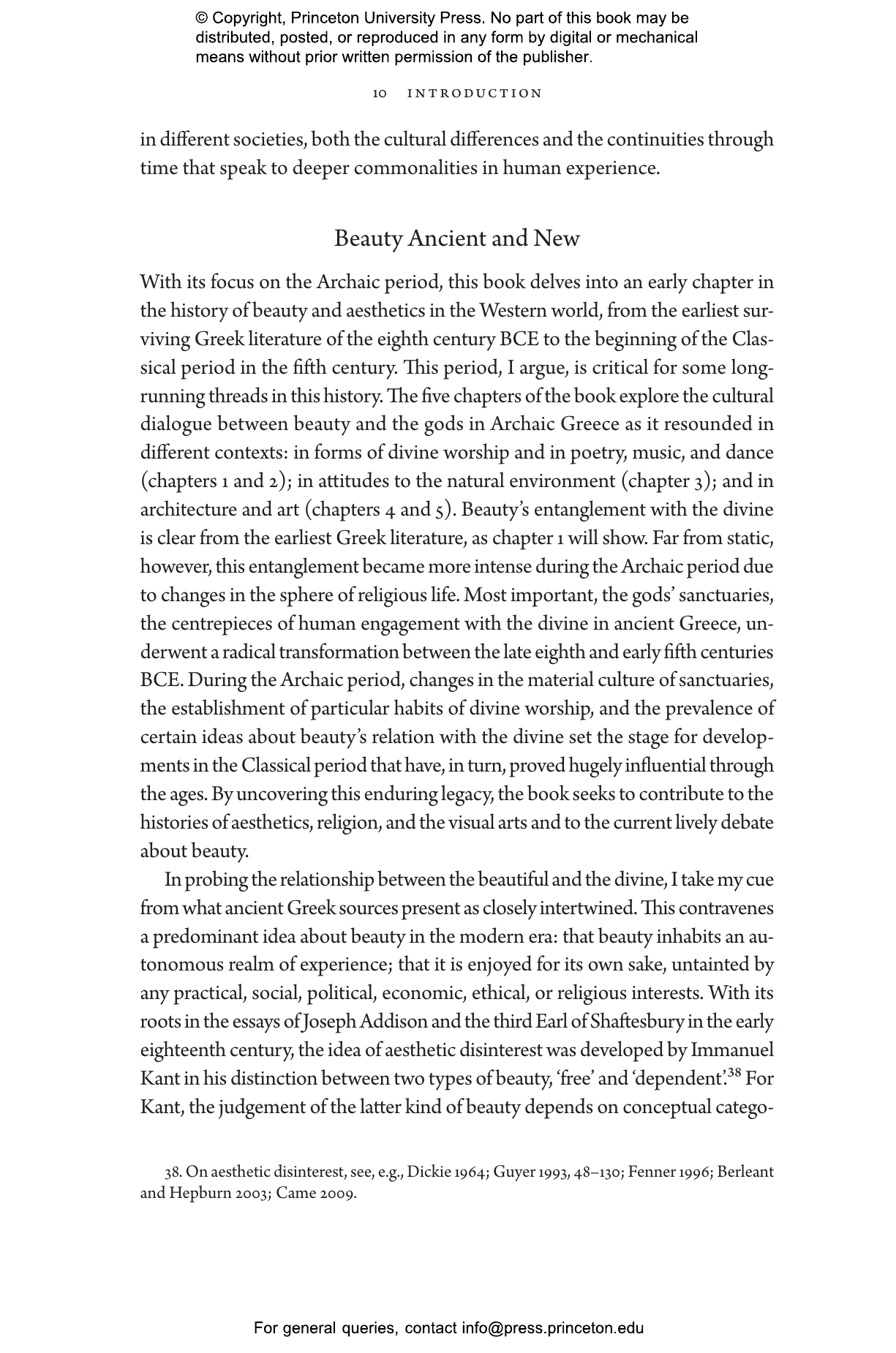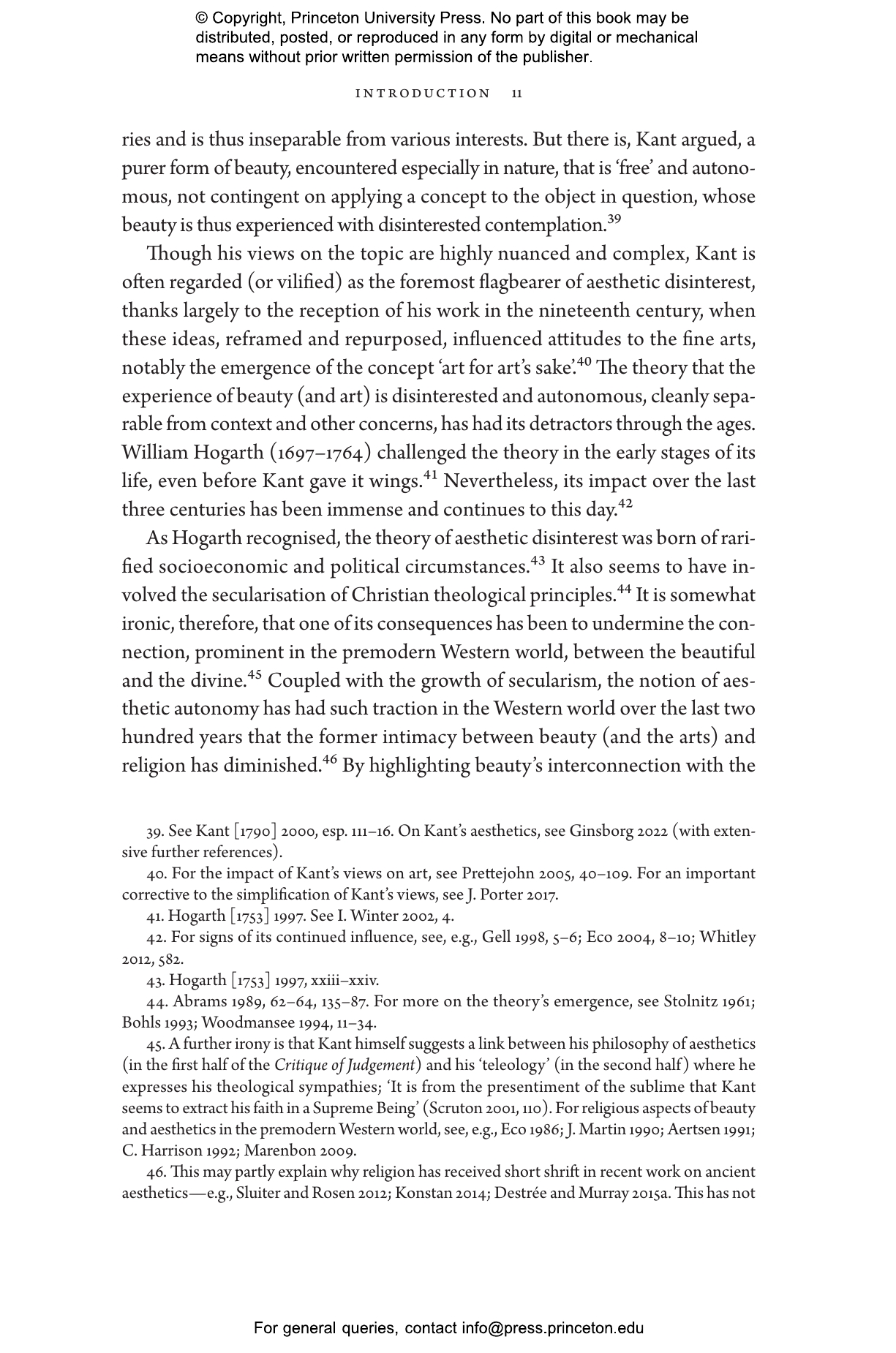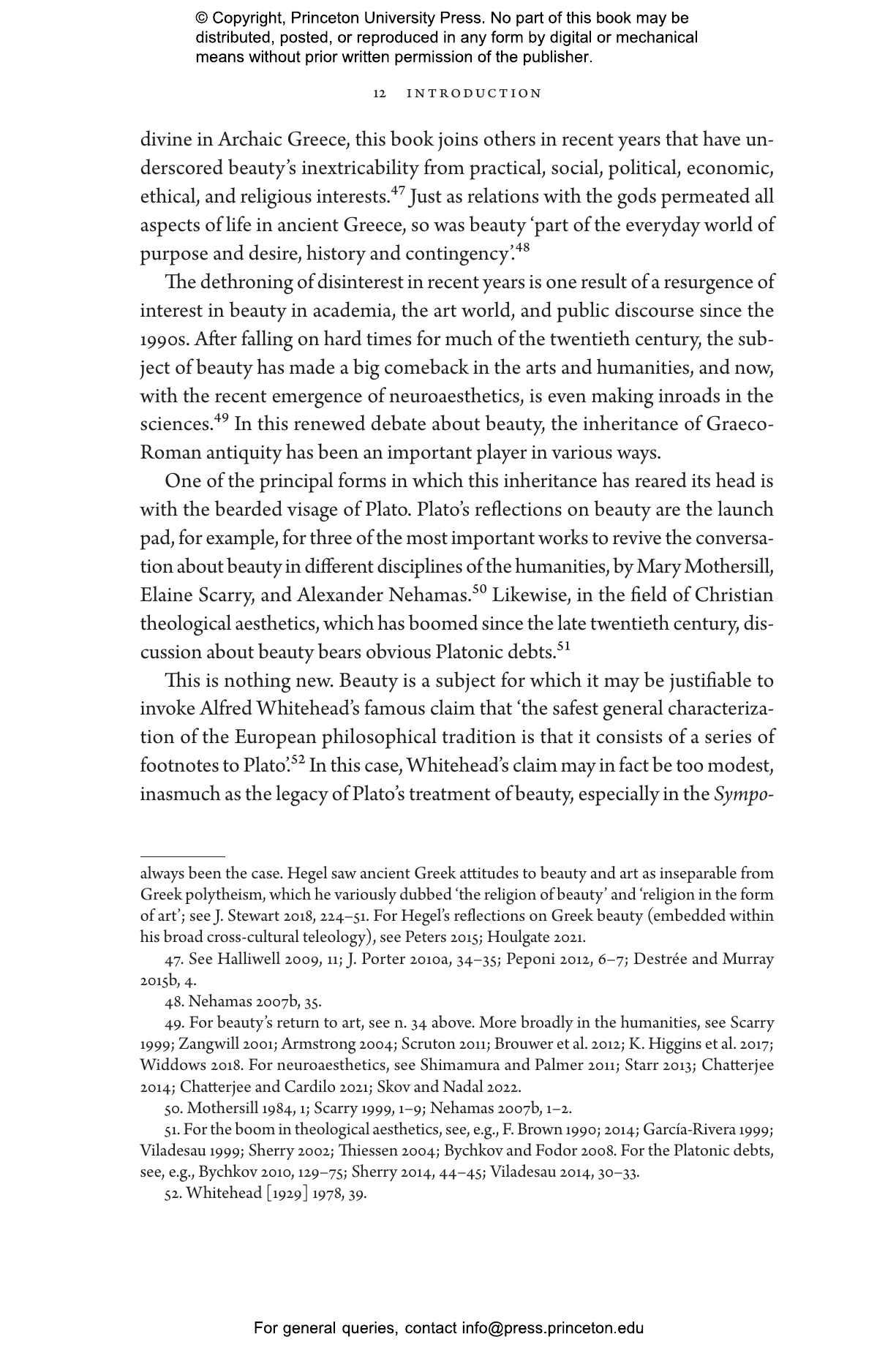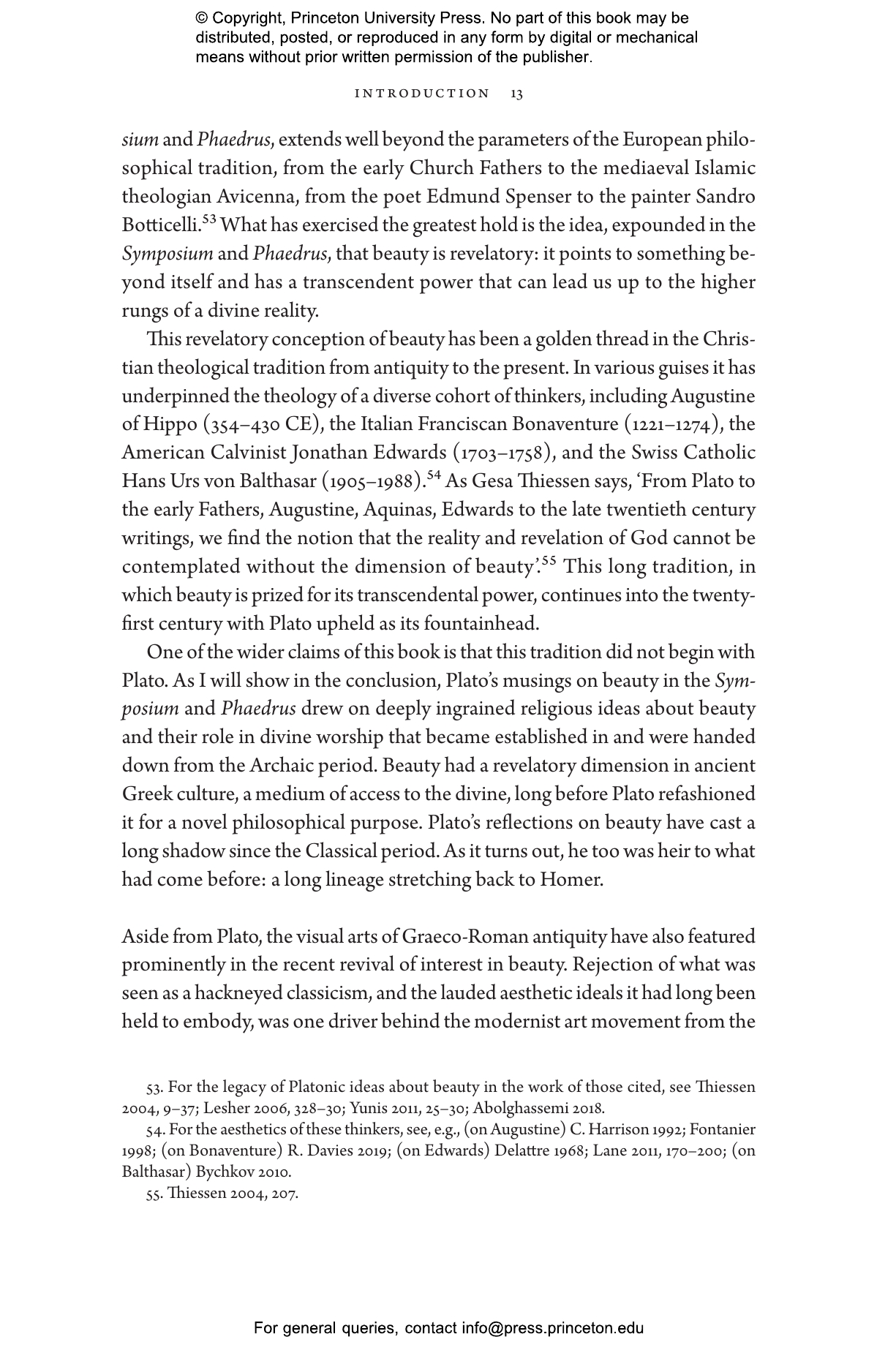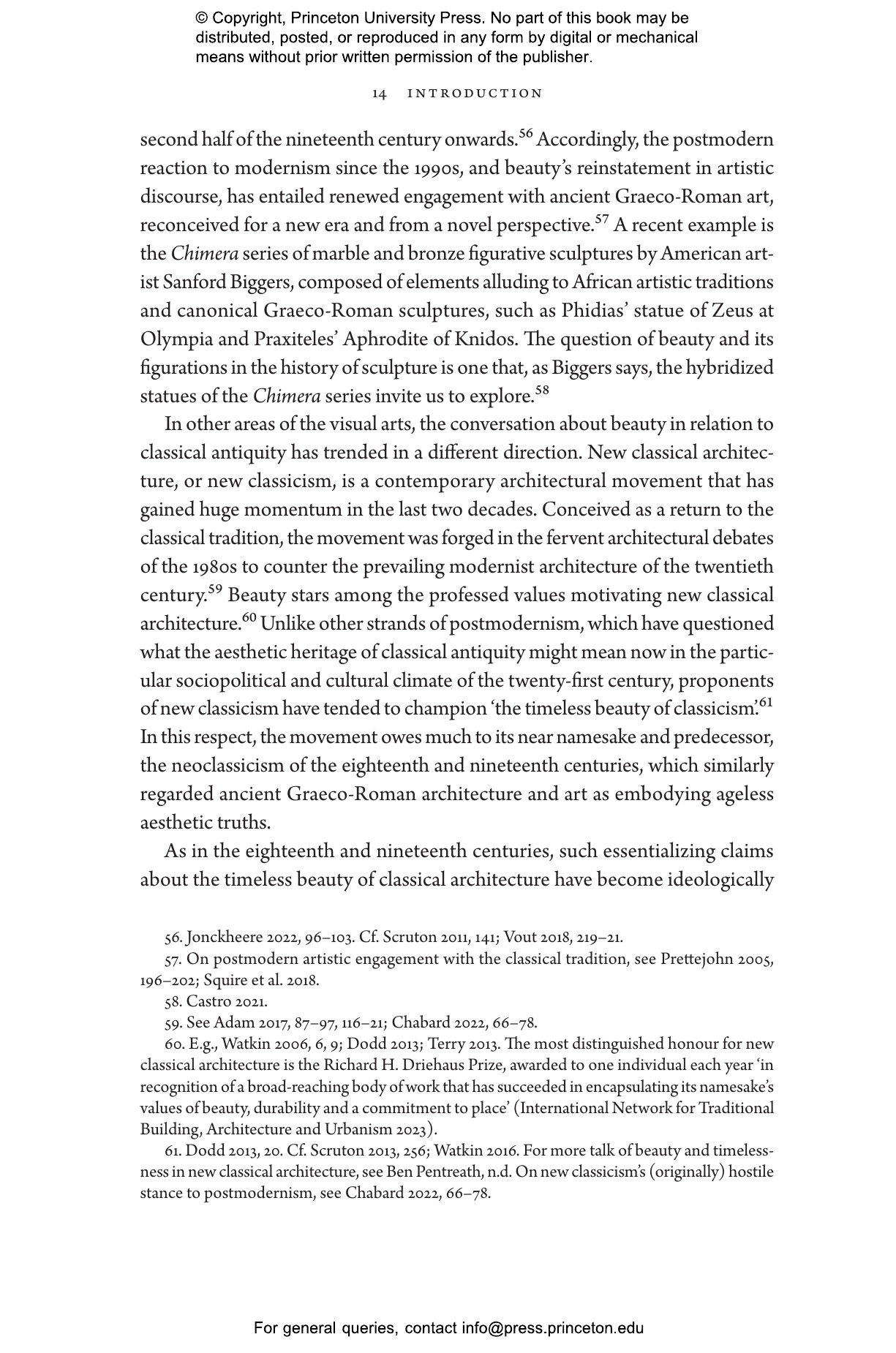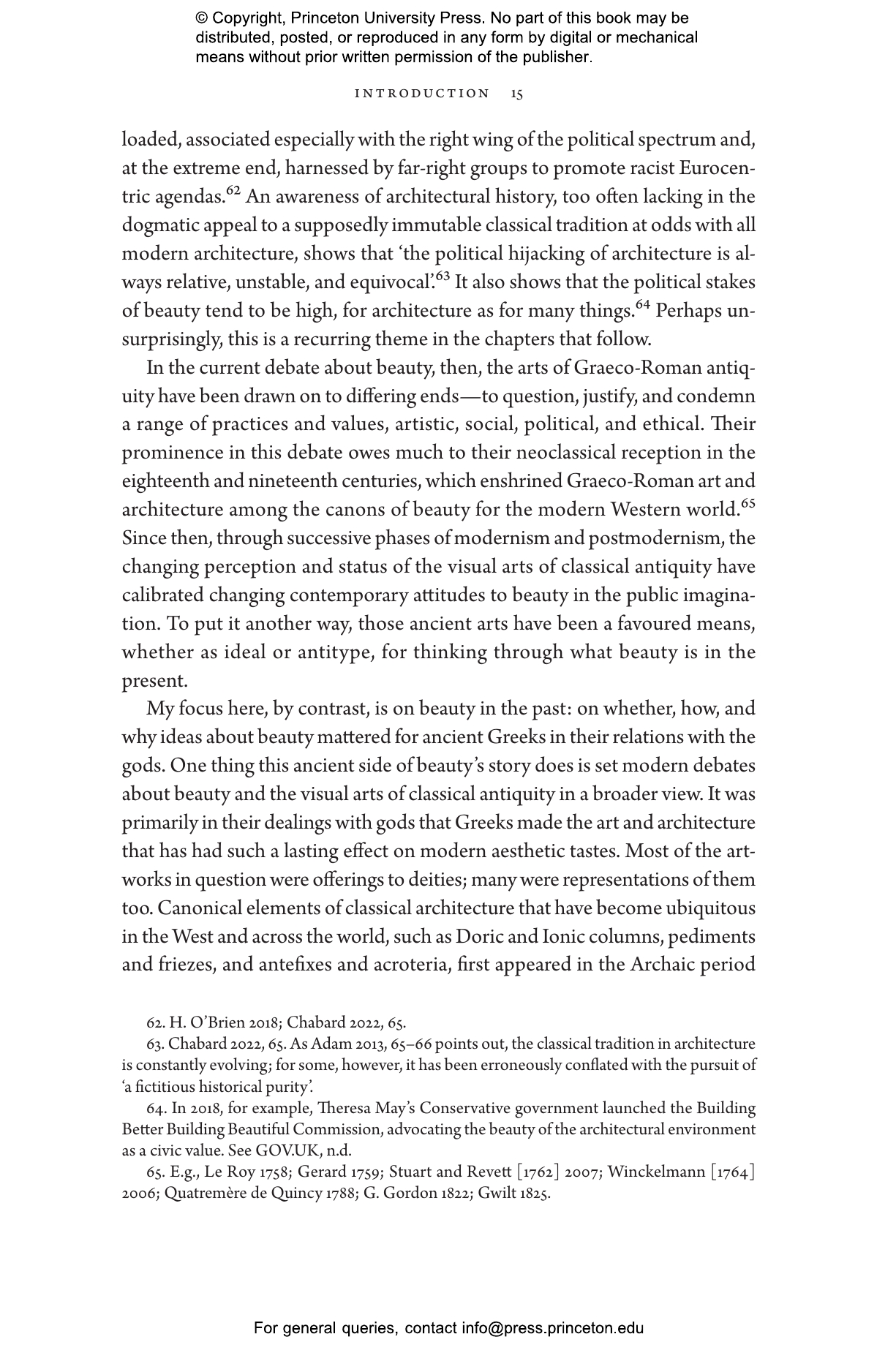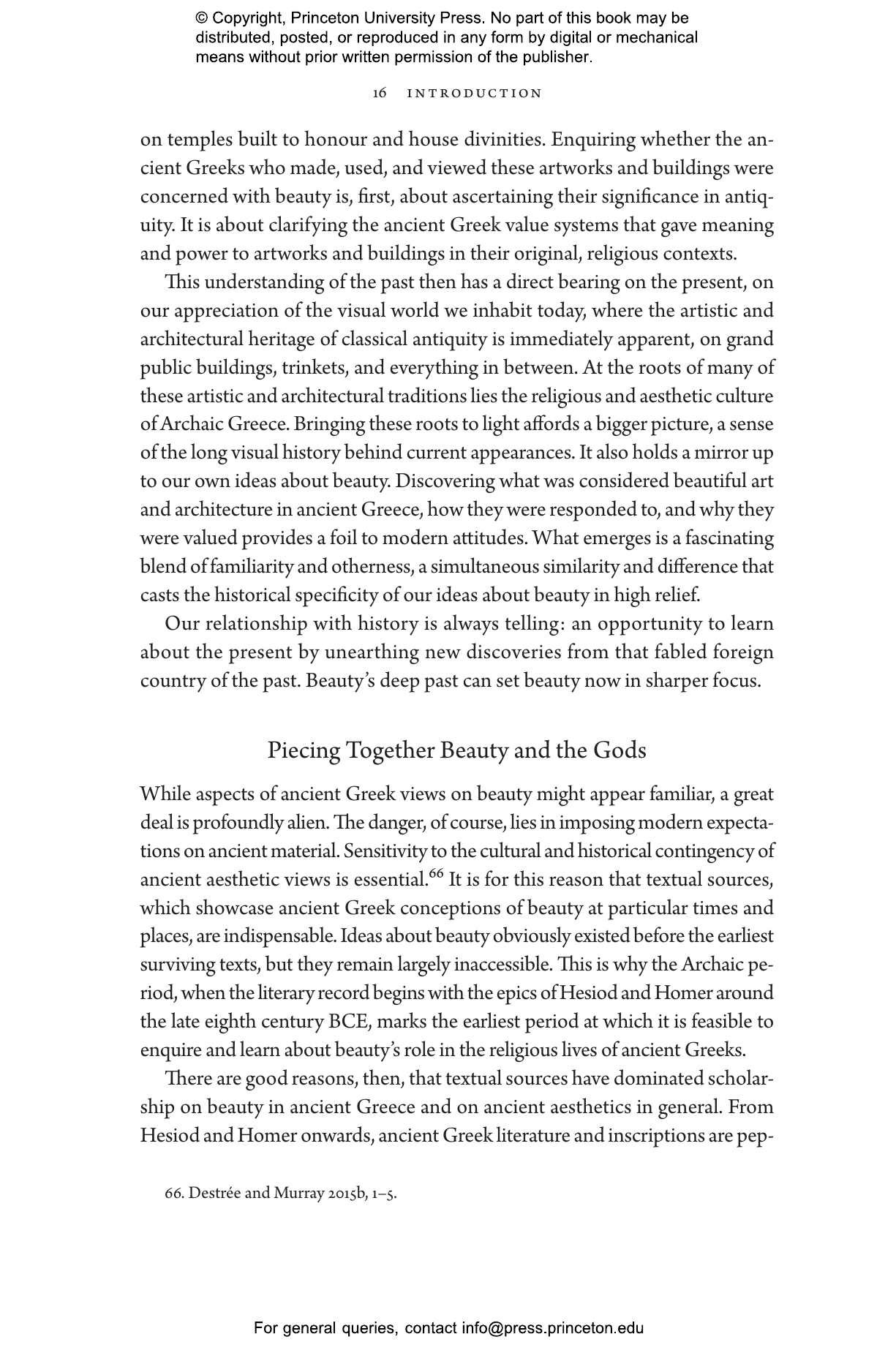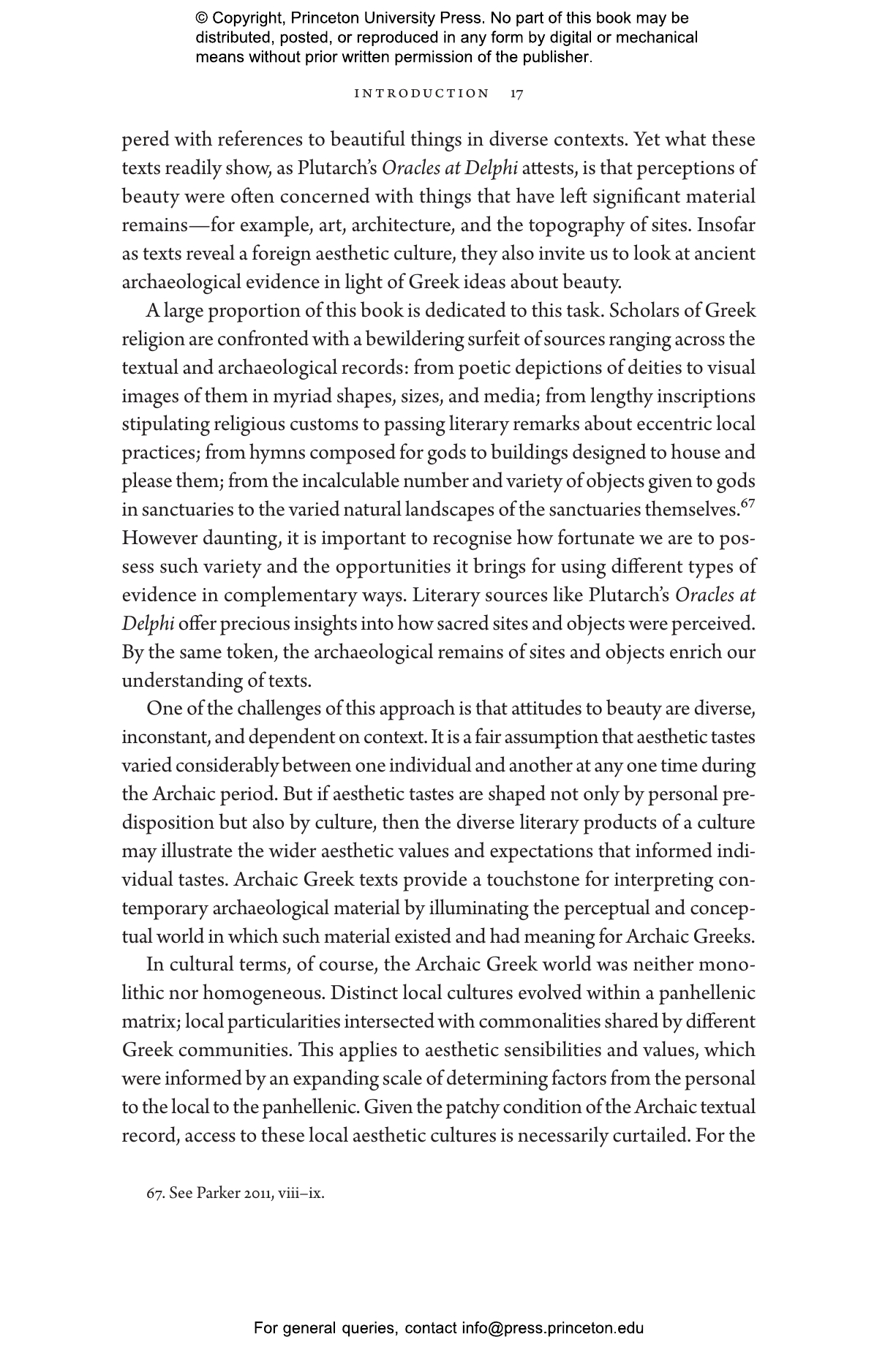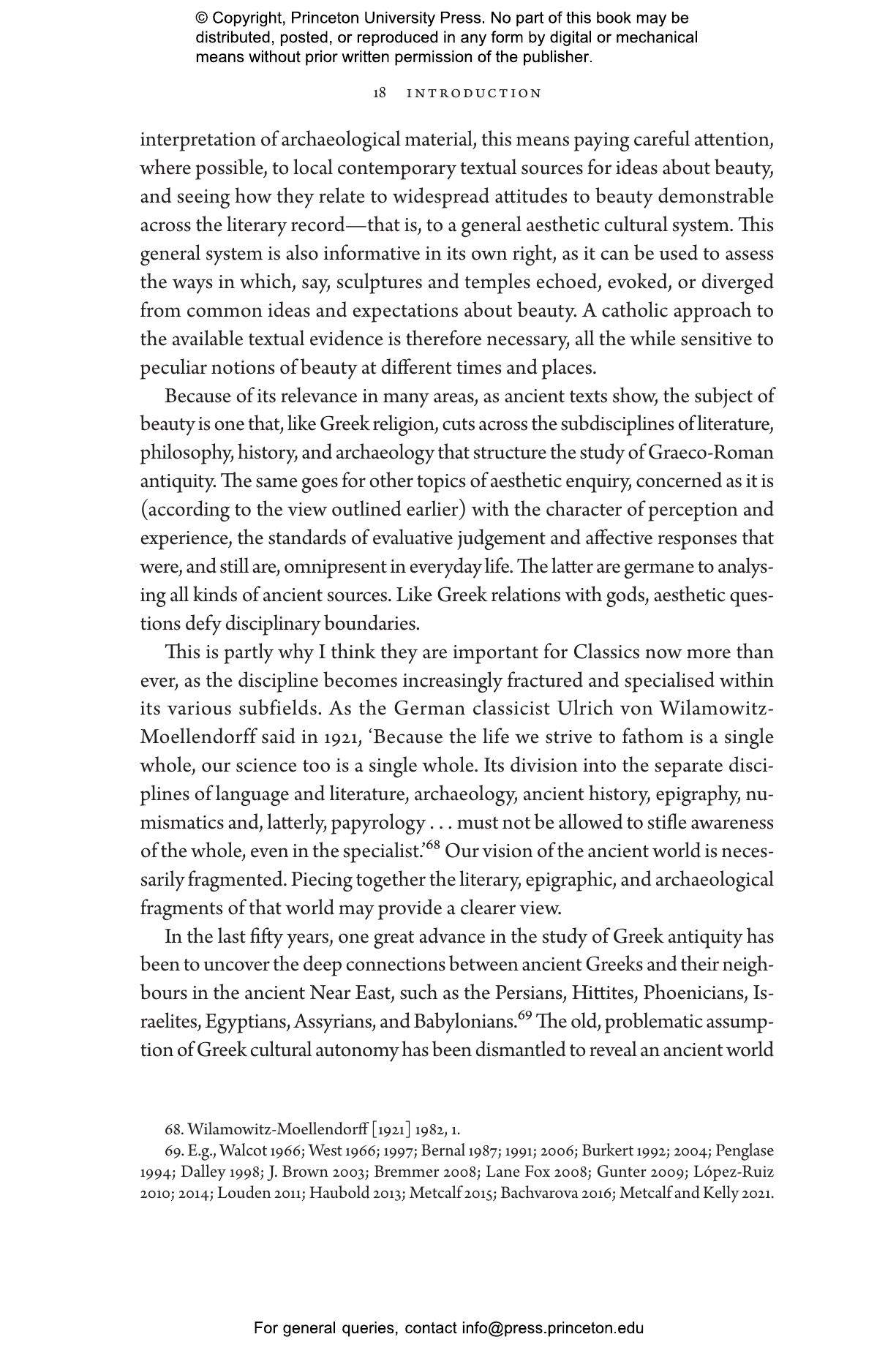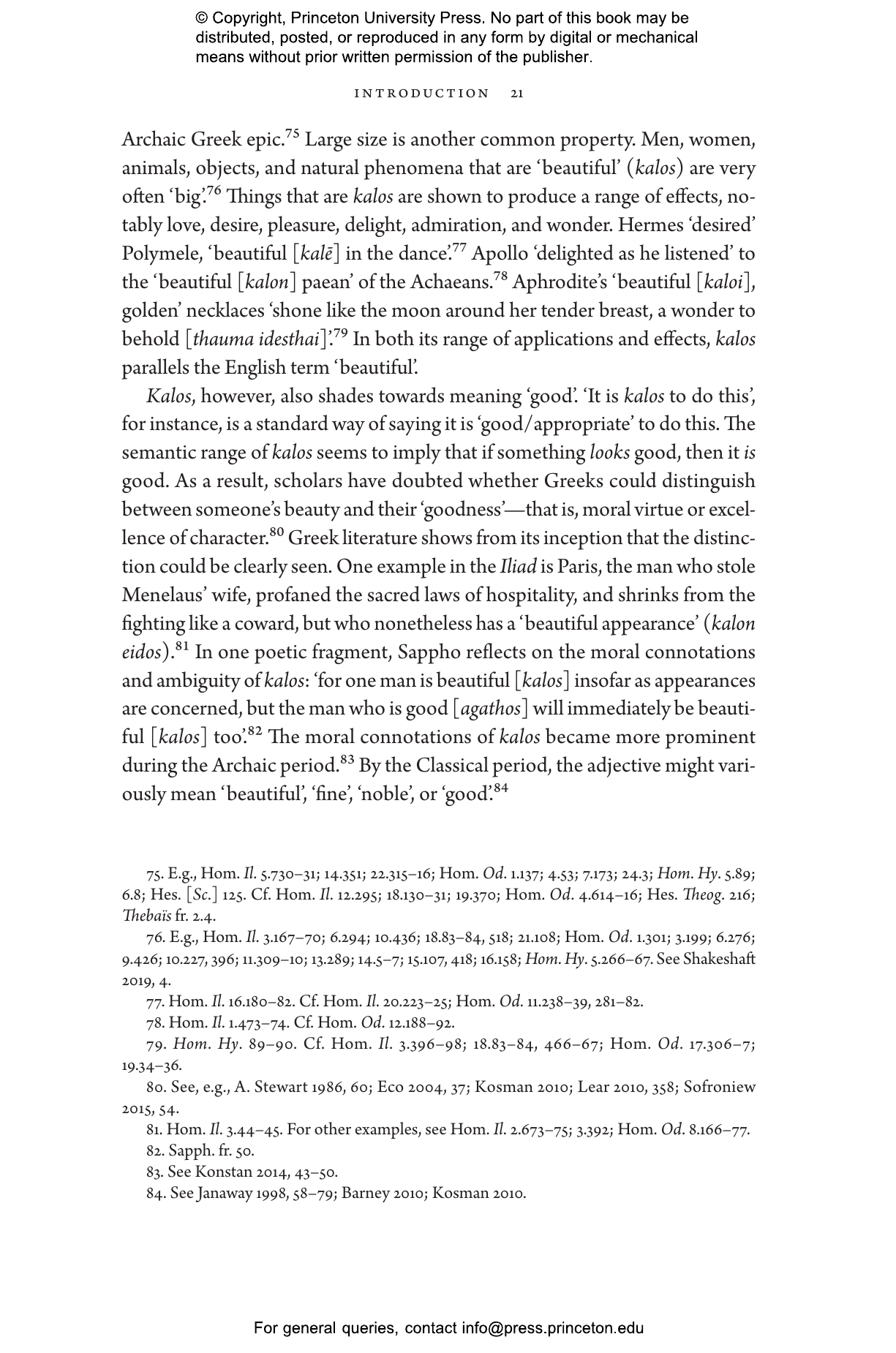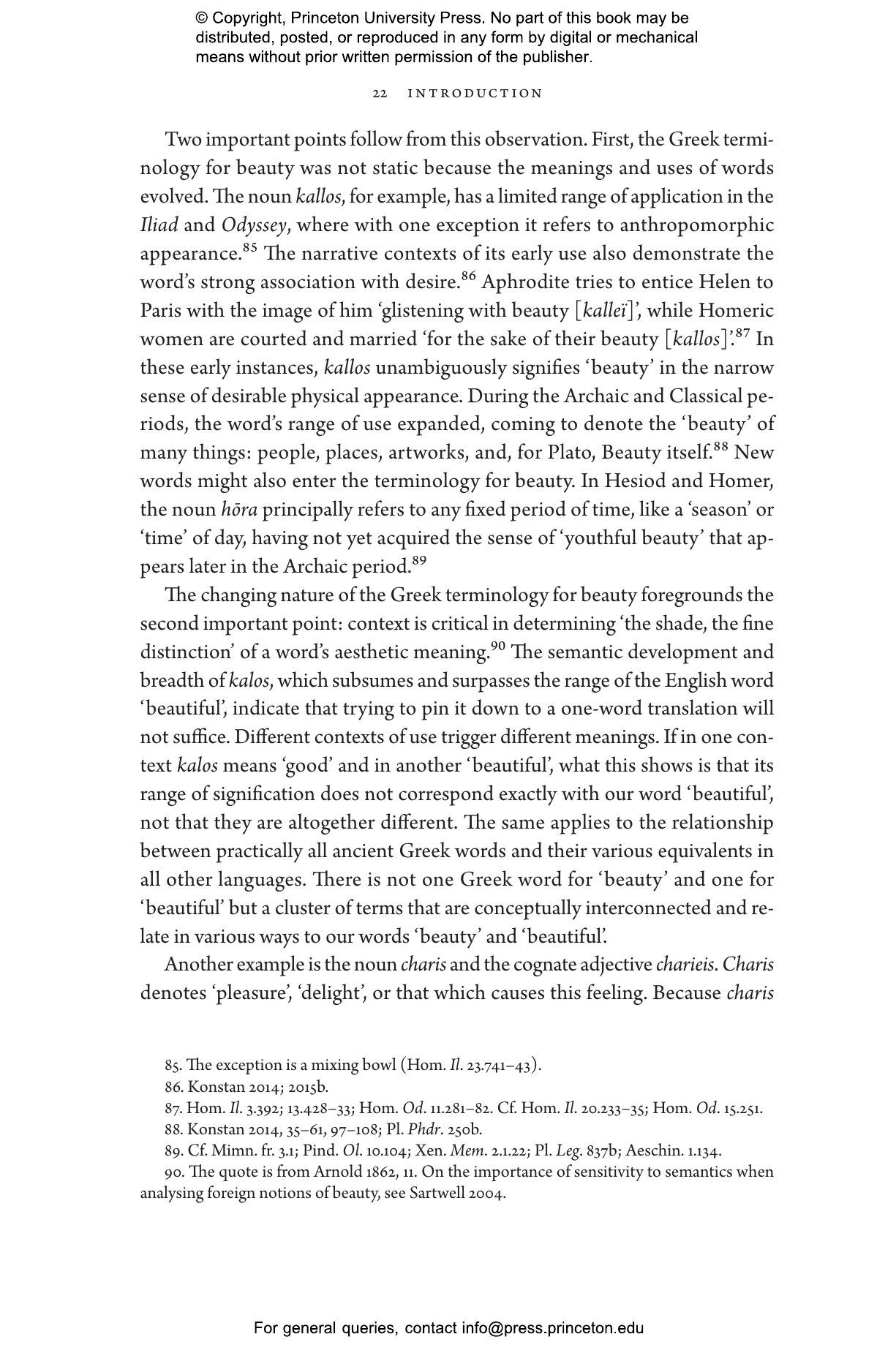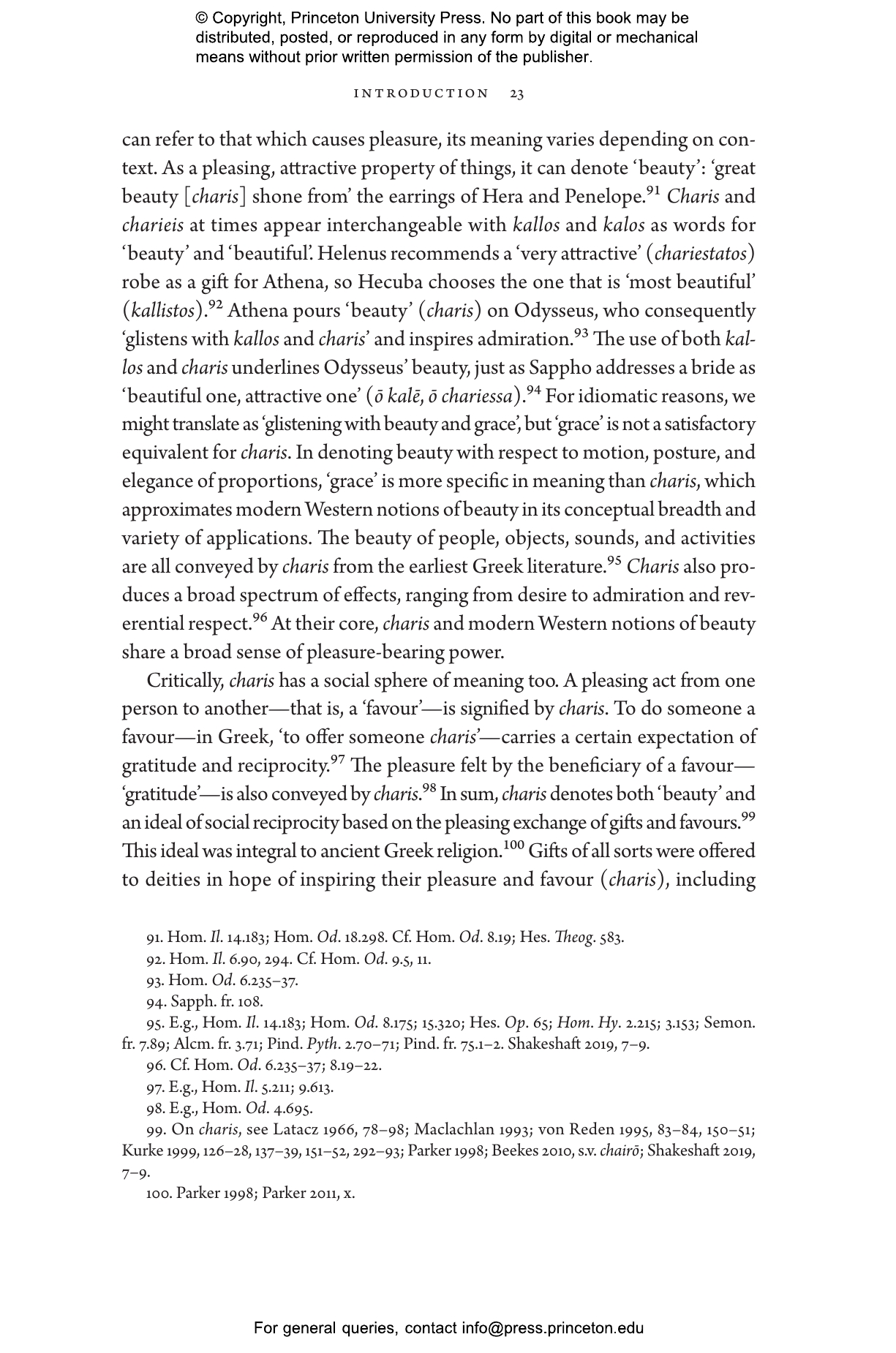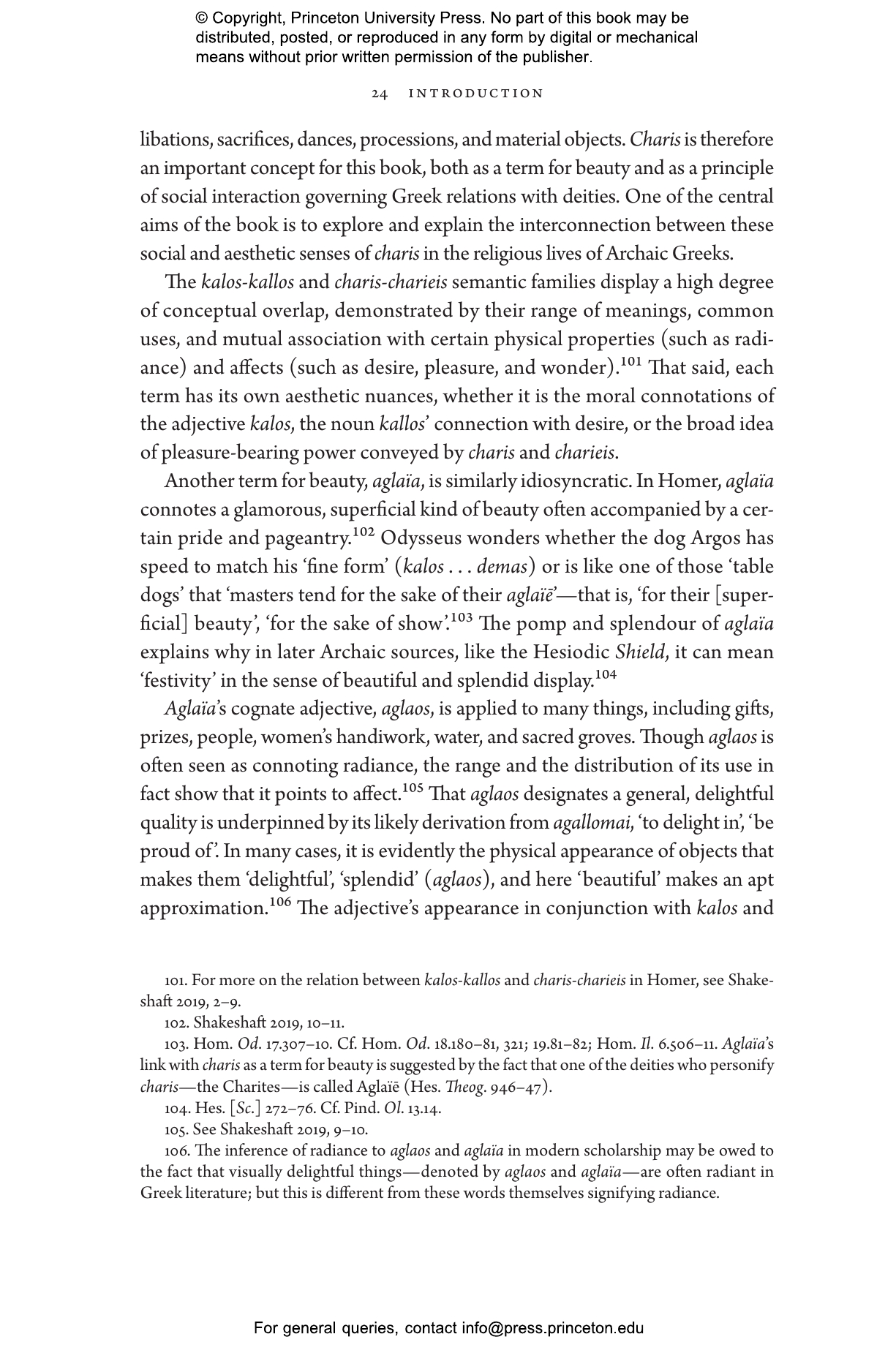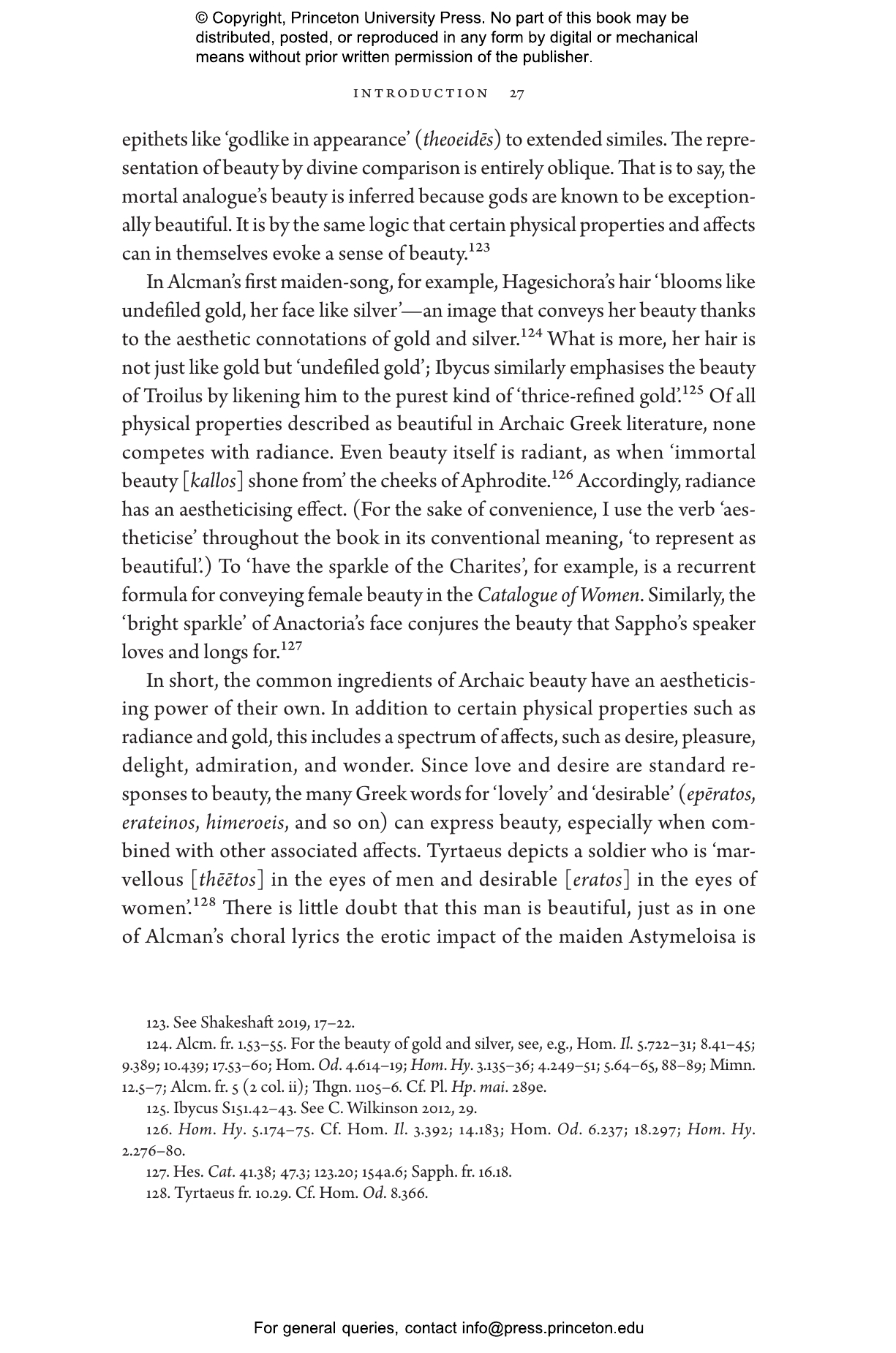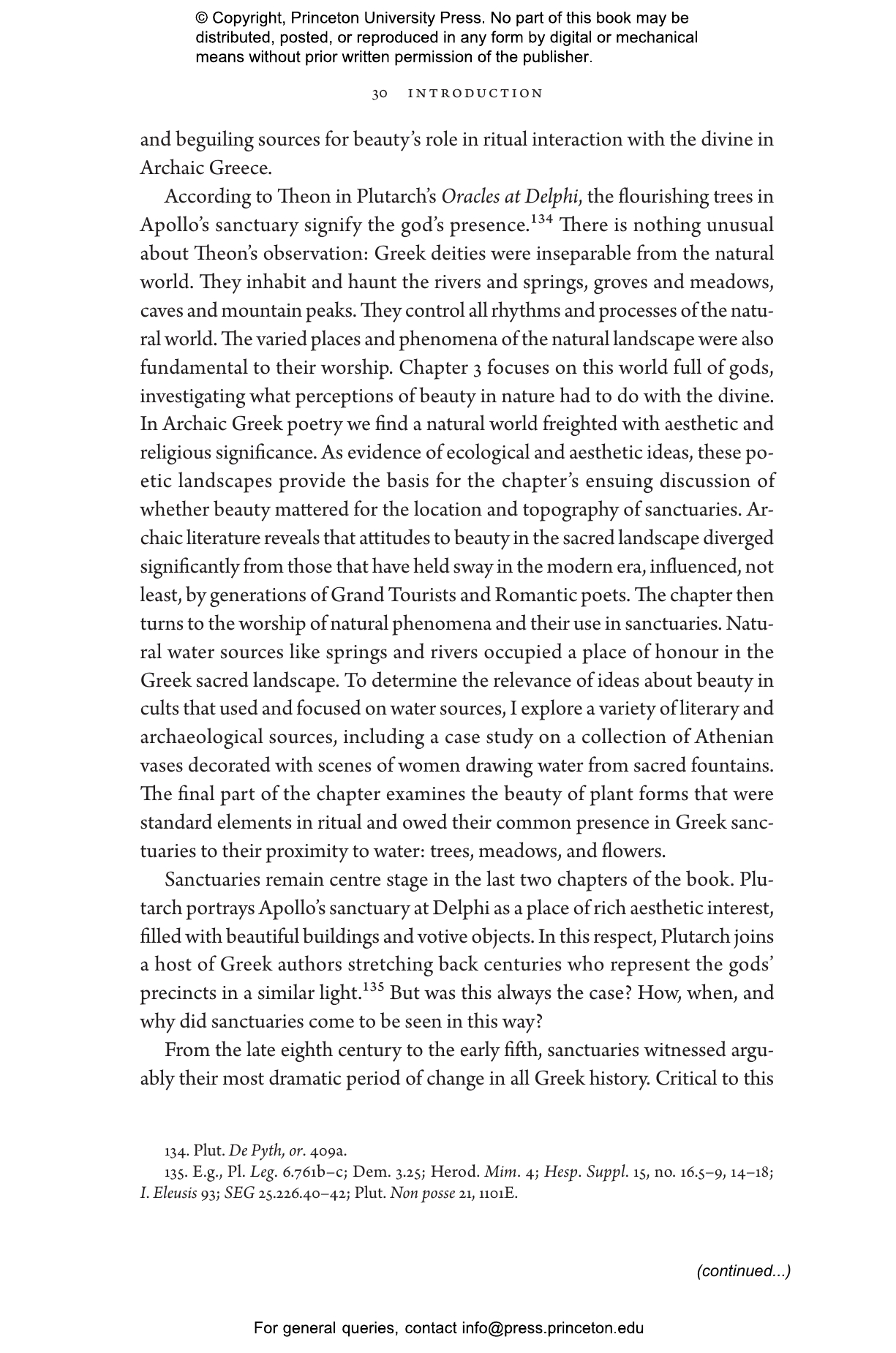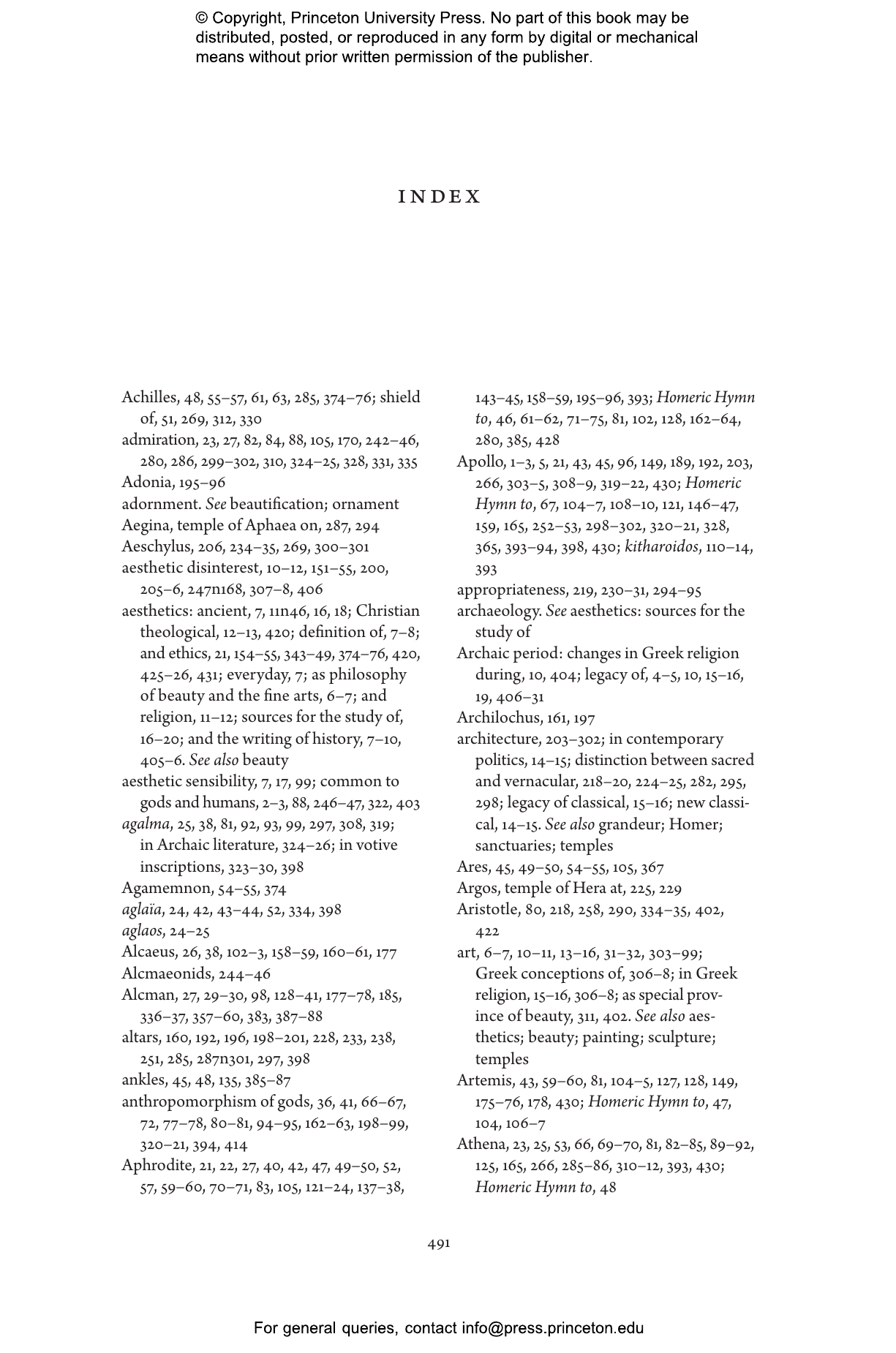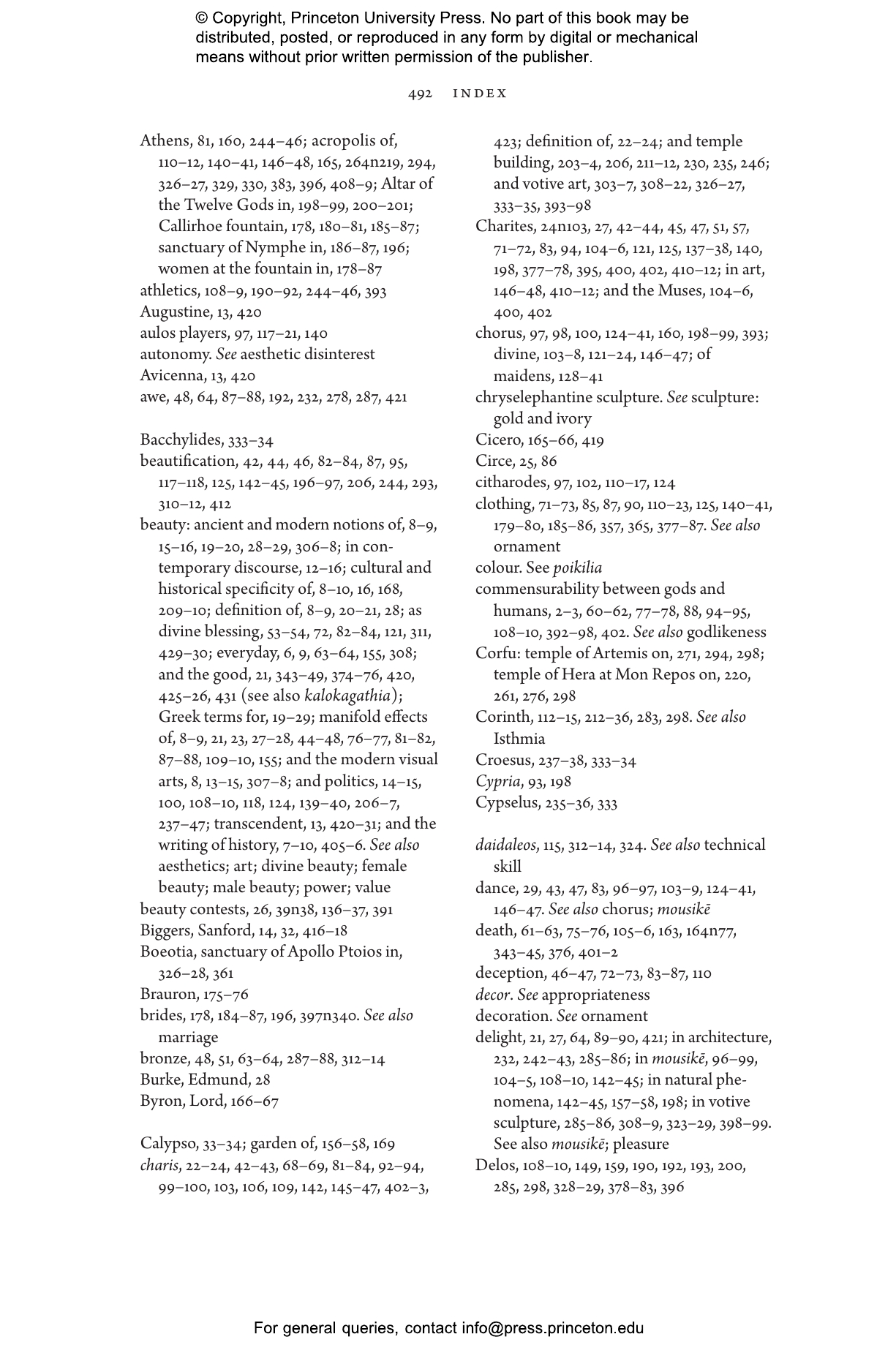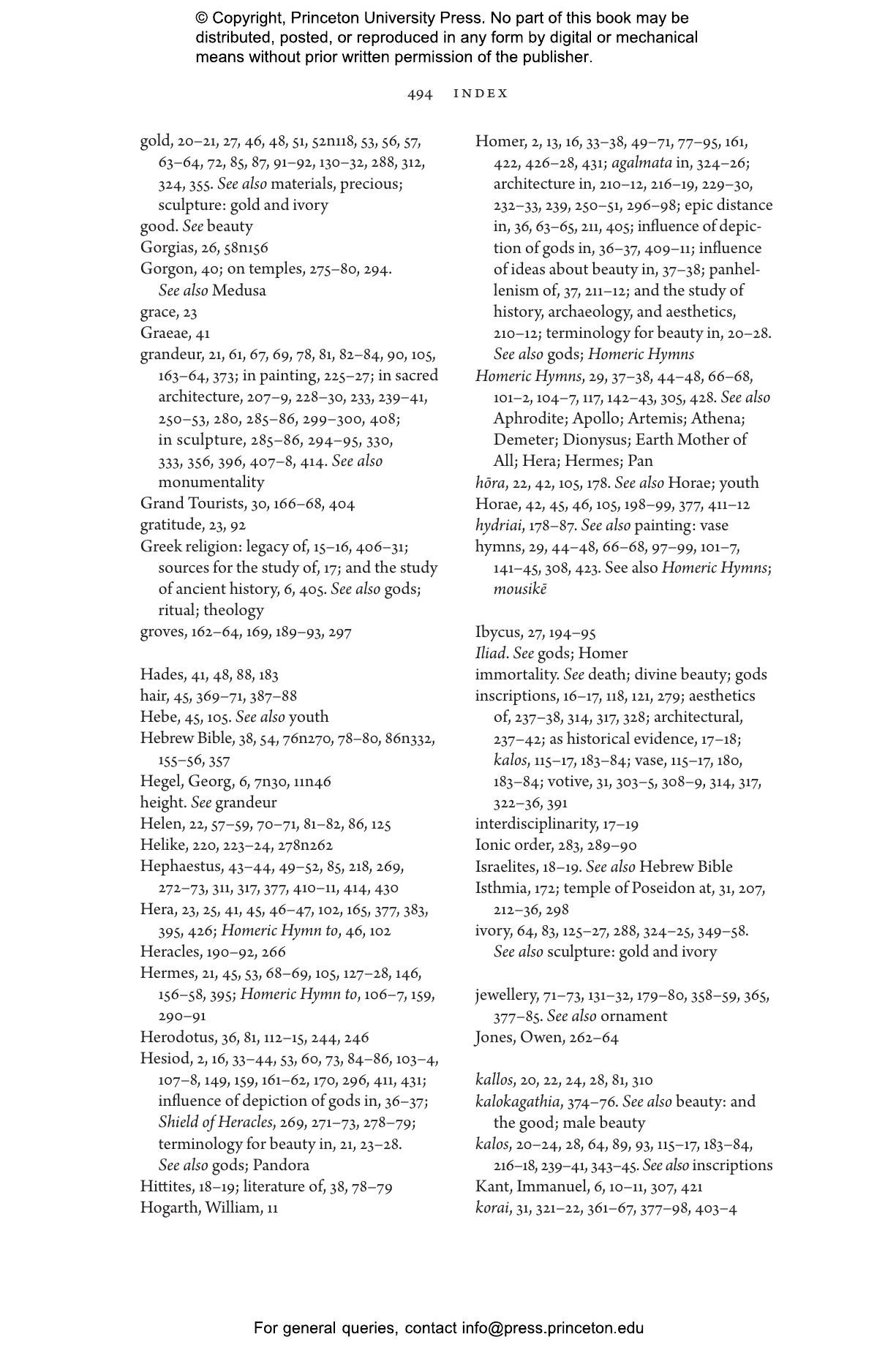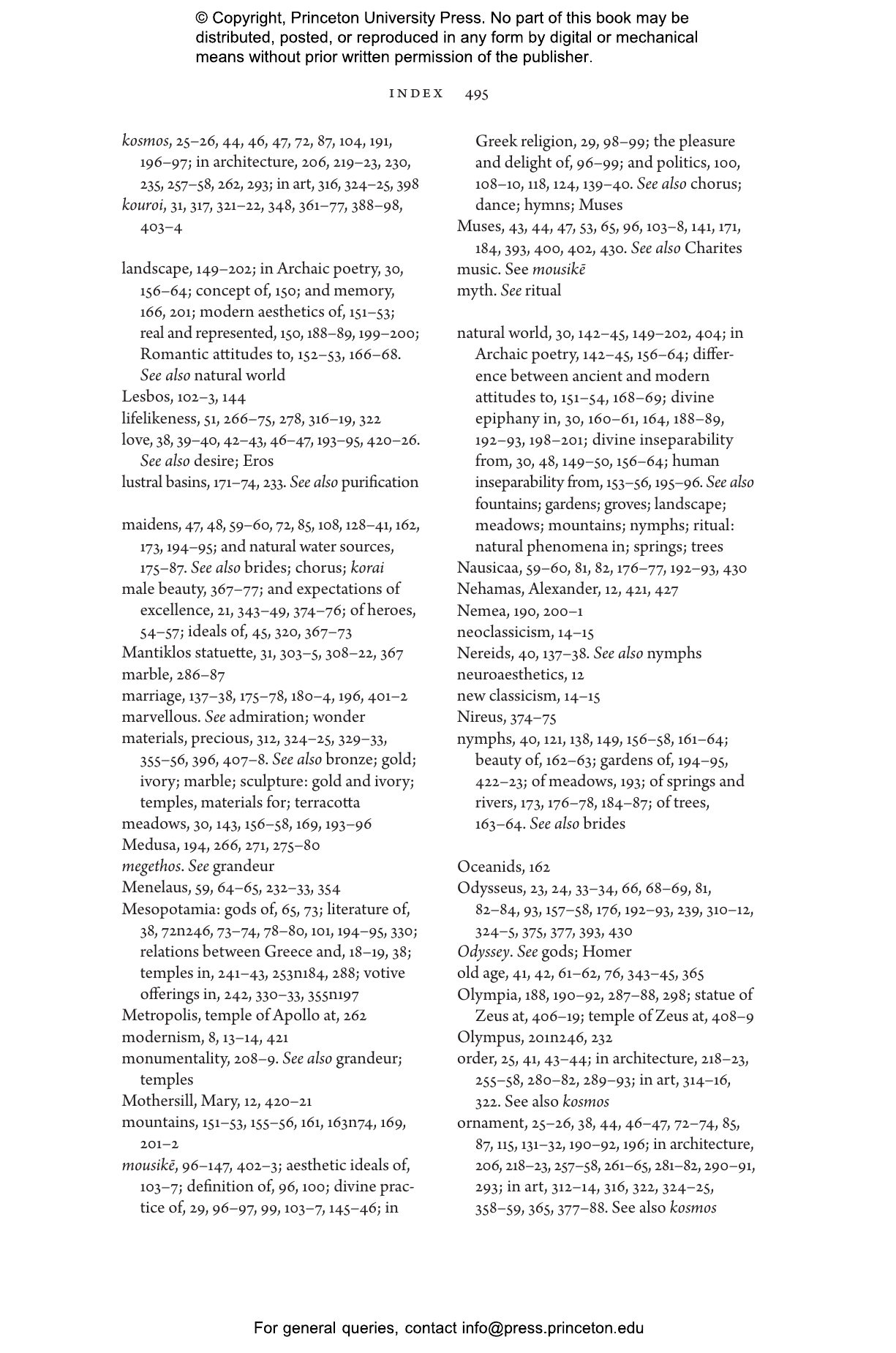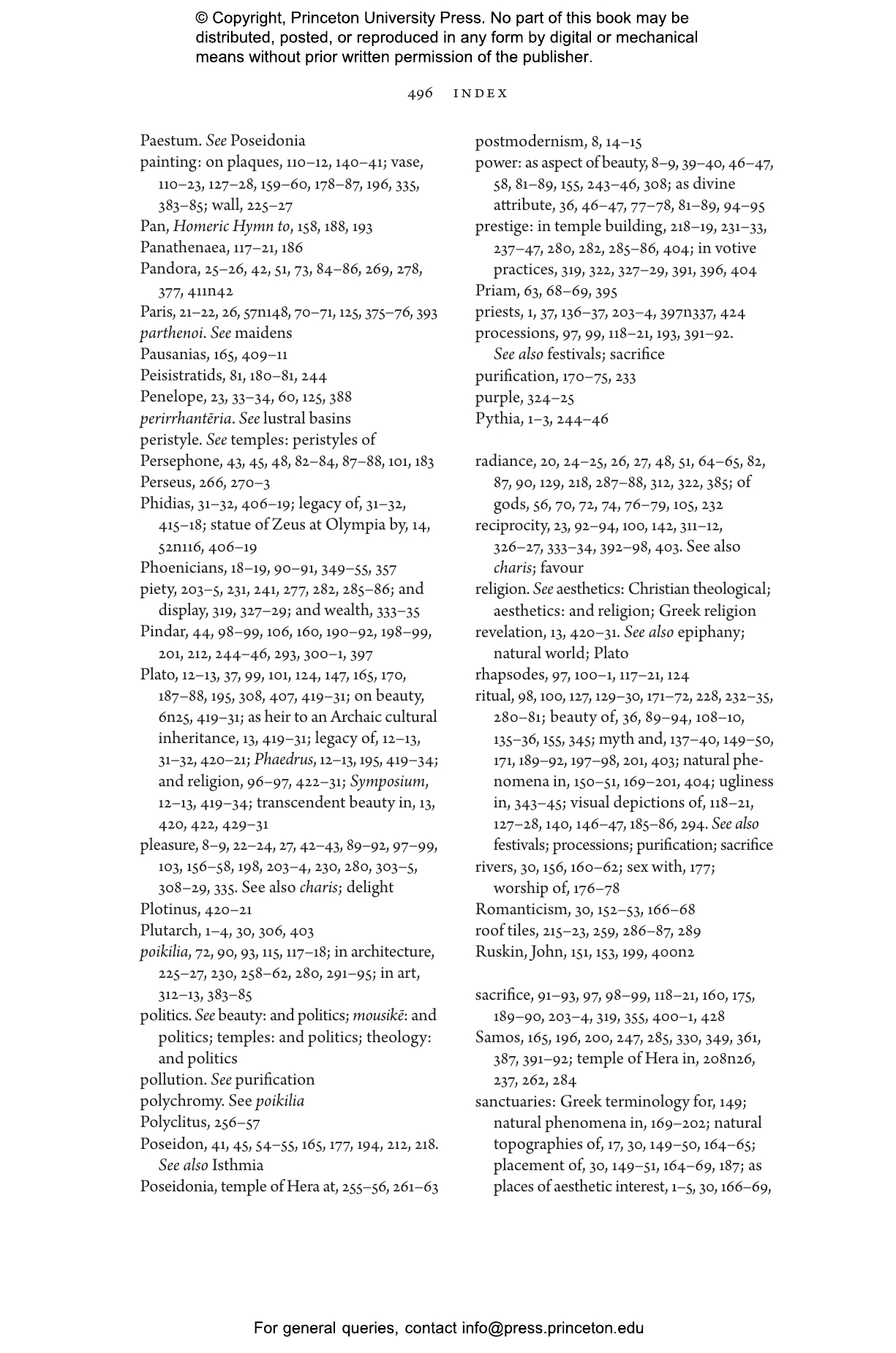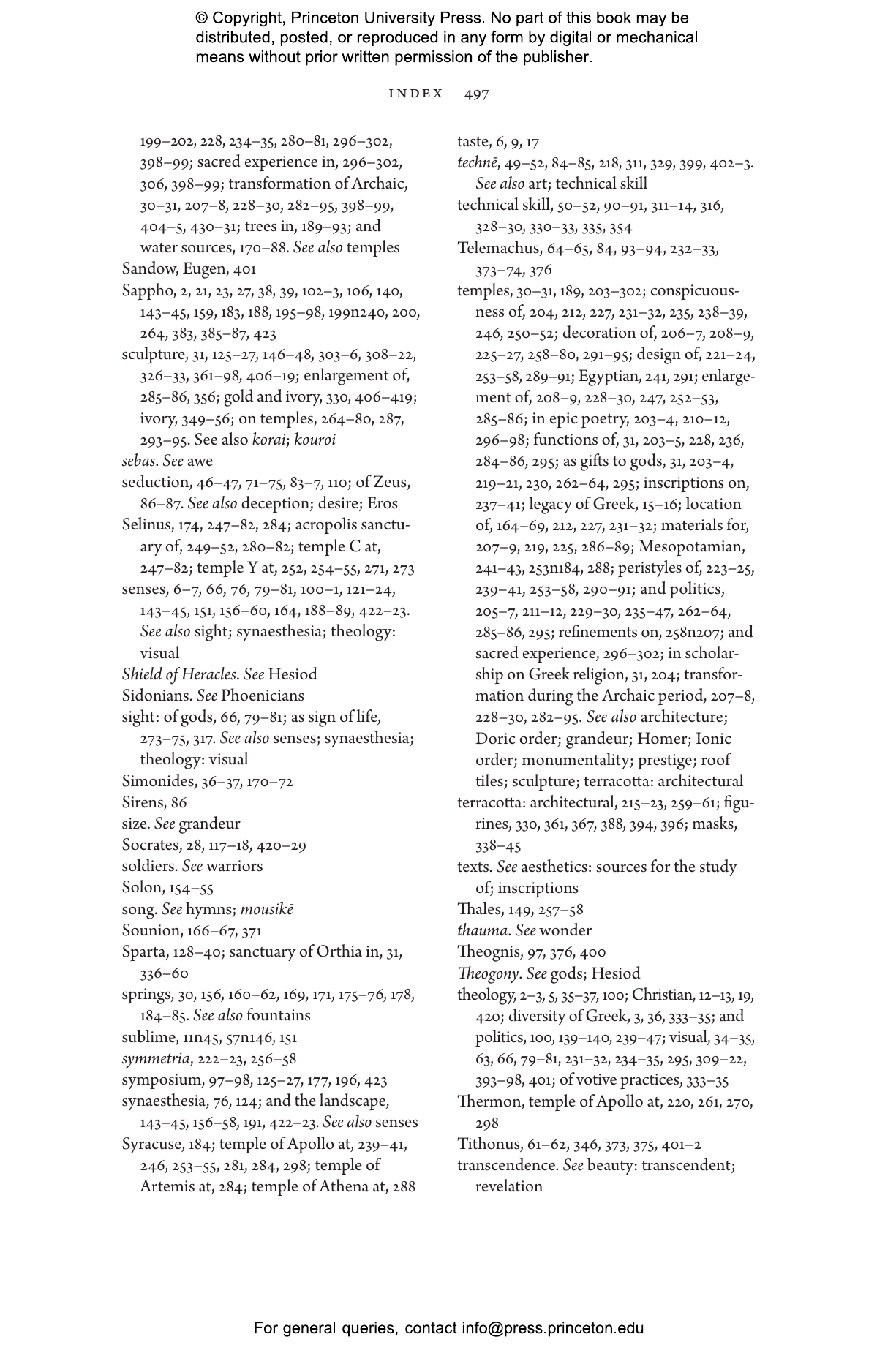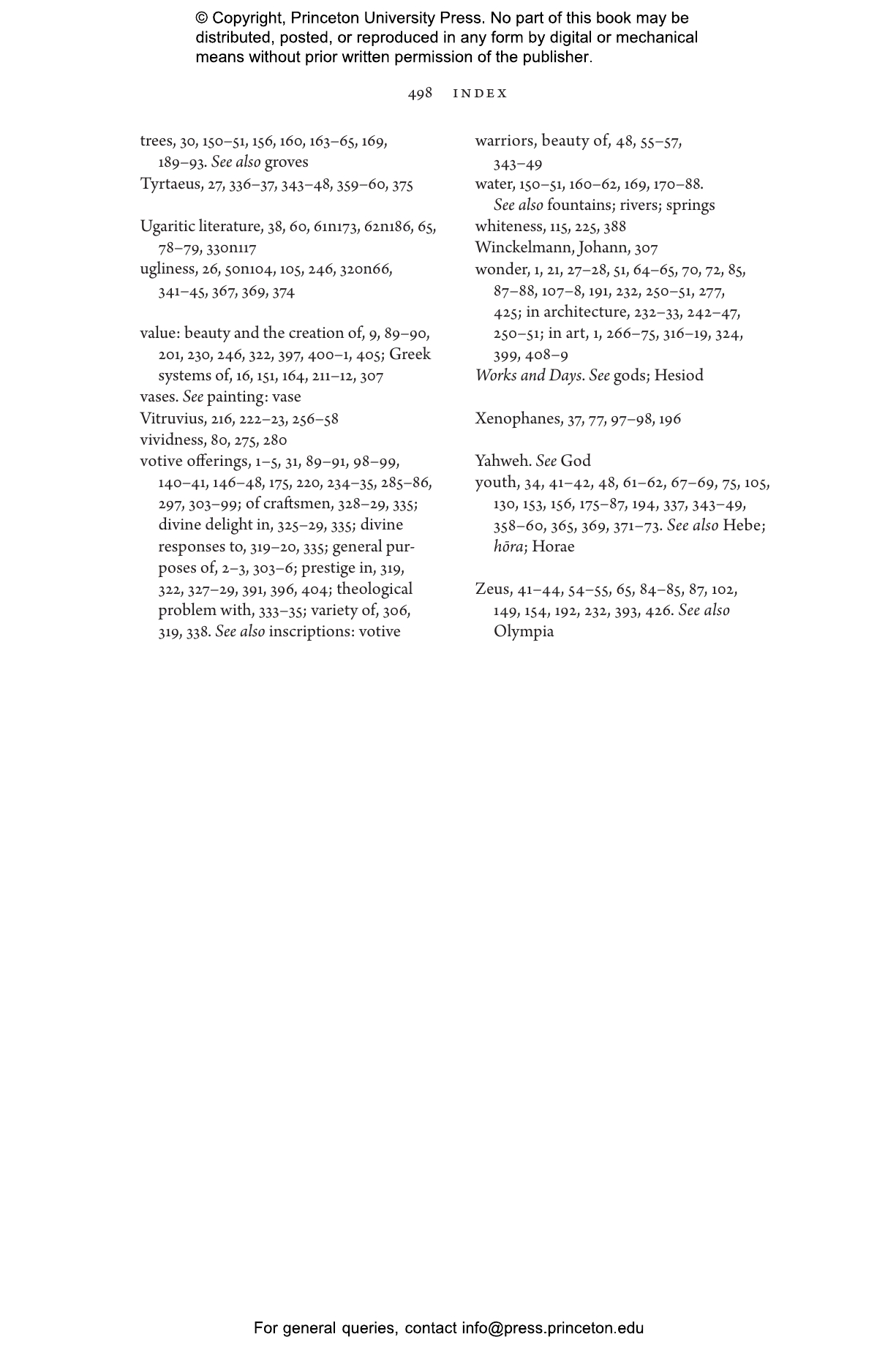Beginning with the earliest Greek literature, the epics of Homer and Hesiod, beauty was seen as having a special connection with the divine. The gods of ancient Greece were defined by their exceptional beauty; even today, ‘to look like a Greek god’ is proverbial for human beauty. In Beauty and the Gods, Hugo Shakeshaft explores the relationship between the beautiful and divine in ancient Greece, principally in the Archaic period (ca. 750–480 BCE). Analysing evidence that ranges from poetry, art, and philosophical texts to architecture and the natural landscape, Shakeshaft shows how ideas and experiences of beauty shaped Greek relations with the divine.
With a powerful call for the place of beauty and aesthetics in the writing of history, Shakeshaft uncovers the cultural dialogue between beauty and the gods in a variety of contexts in the Archaic Greek world: in forms of divine worship; in poetry, music, and dance; in attitudes to the natural environment; and in architecture and art. This early chapter of Greek history, he argues, holds an unrecognised key to understanding some long-running threads in the histories of religion, art, and aesthetics, from Plato’s aesthetic theories to beauty’s status in contemporary discourse. Beauty’s deep past and divine connection in ancient Greece can help us see beauty now in sharper focus.
Hugo Shakeshaft is the A. W. Mellon Postdoctoral Fellow at the Center for the Advanced Study of the Visual Arts at the National Gallery of Art in Washington, D.C. He previously held fellowships at the Kunsthistorisches Institut in Florence and the University of Oxford and in 2023 received the College Art Association’s Arthur Kingsley Porter Prize.
“Hugo Shakeshaft offers a delicate historical answer to the blunt universal question: What makes something or someone ‘beautiful’?”—Nigel Spivey, author of Greek Sculpture
“This is an ambitious, large-scale and important book. The argument is at once new and compelling. One of the most valuable aspects is the author’s ease in moving between different sorts of materials and media: Shakeshaft is as at home in discussing fragments of Pindar as he is amid the archaeological finds from the Temple of Poseidon at Isthmia. In all this he excavates a particular cultural and theological history of Graeco-Roman antiquity in order to make an important intellectual intervention beyond the discipline of Classics.”—Michael Squire, Trinity College, University of Cambridge
“In a series of fascinating studies that range across literary texts, the architecture of Greek temples, and Greek sculpture and vase painting, Shakeshaft shows how the beauty was crucial to Greek experience of the divine: it lay at the root of Greek anthropomorphism (gods find beautiful what is most like themselves) while also, since beauty points beyond itself, creating an insistence on transcendence that will be taken up by Plato and given a long future.”—Robin Osborne, author of Greek History: The Basics
“A welcome and nearly exhaustive study of beauty’s manifestations in archaic and classical Greece. Shakeshaft sets a new standard for tracing aesthetic impulses as modes of communicating with the divine in literature, philosophy, and material culture. A steady stream of parallels with the ancient Near East is an unexpected rich bonus.”—James I. Porter, University of California, Berkeley


